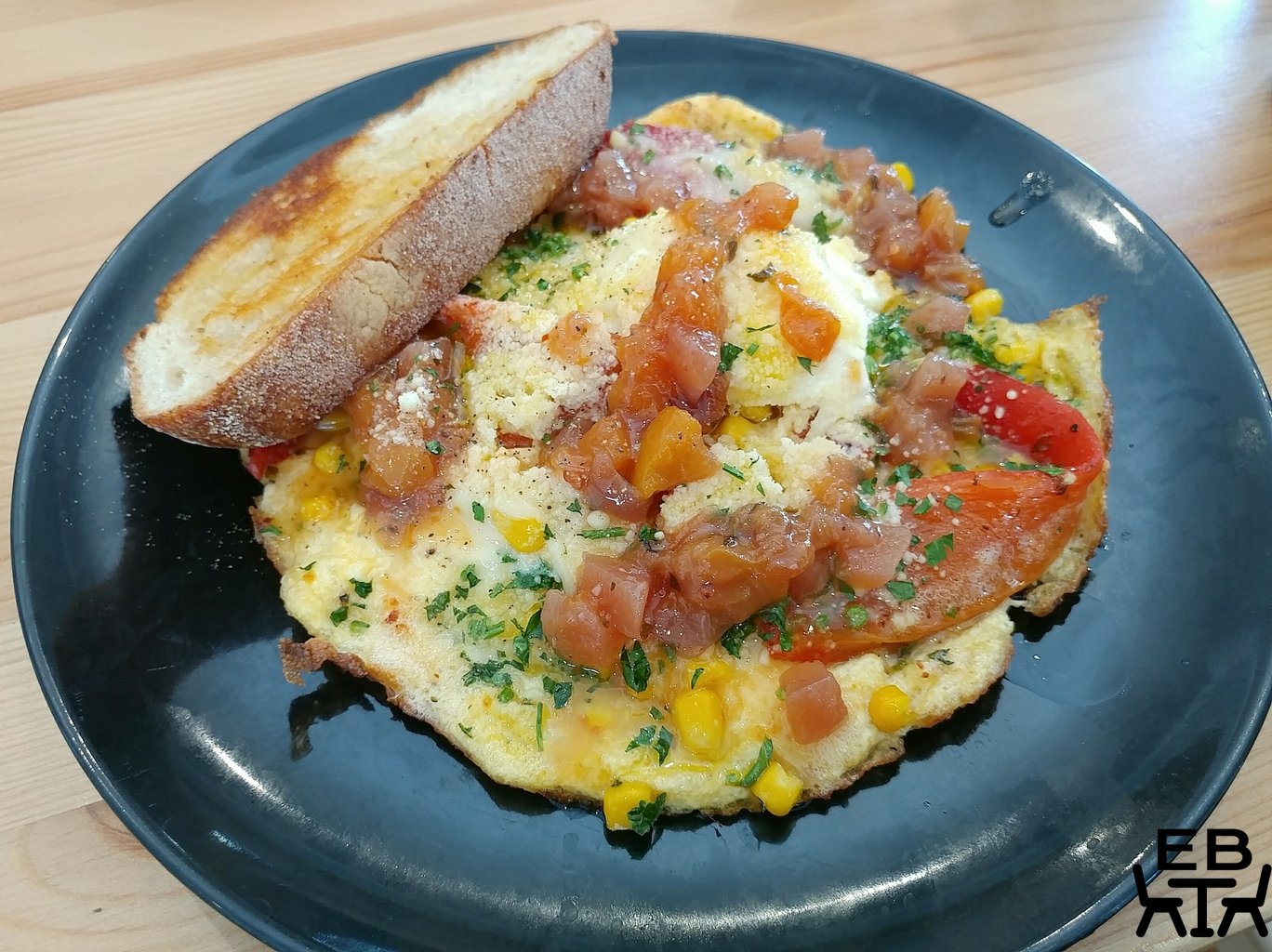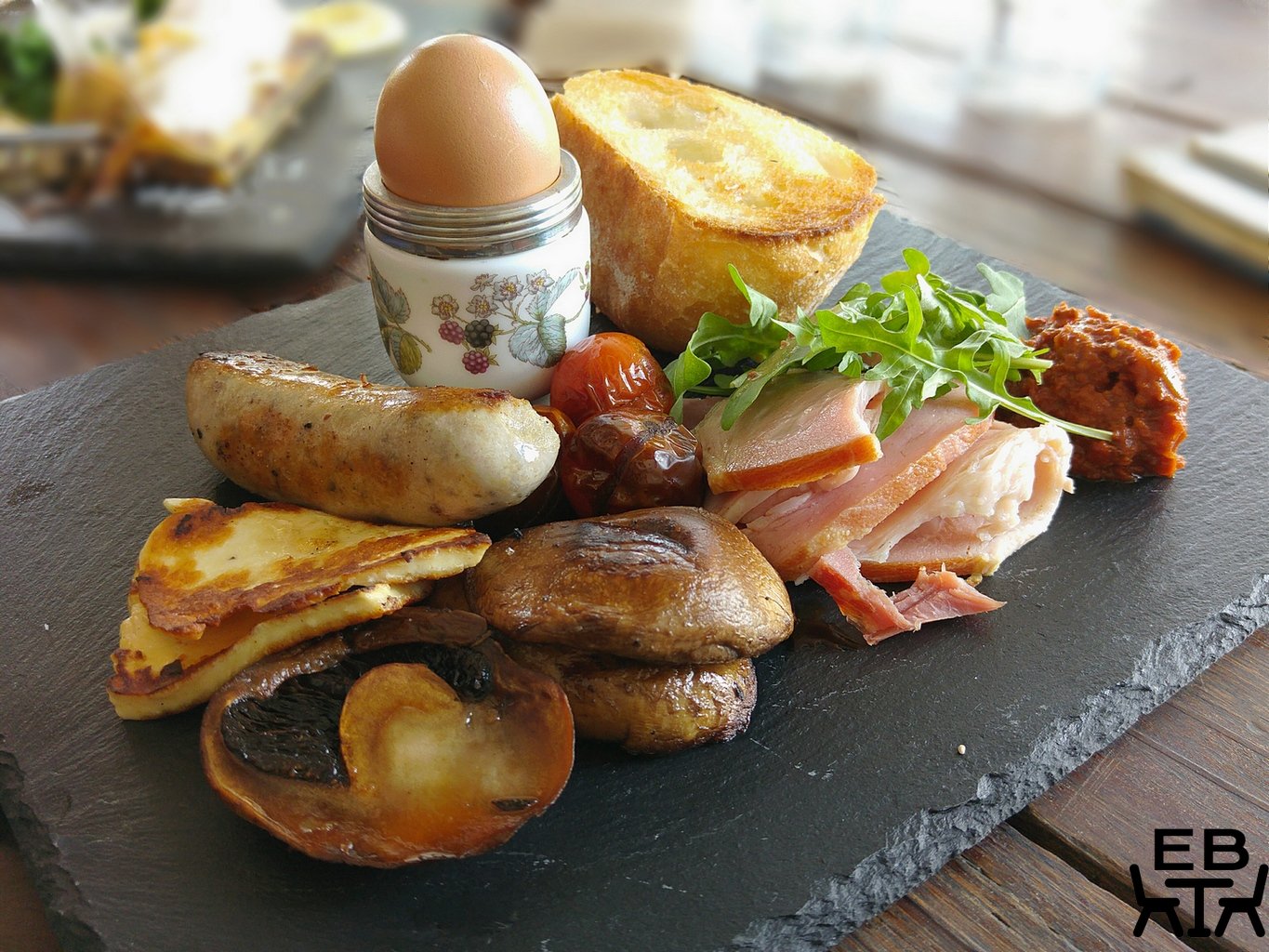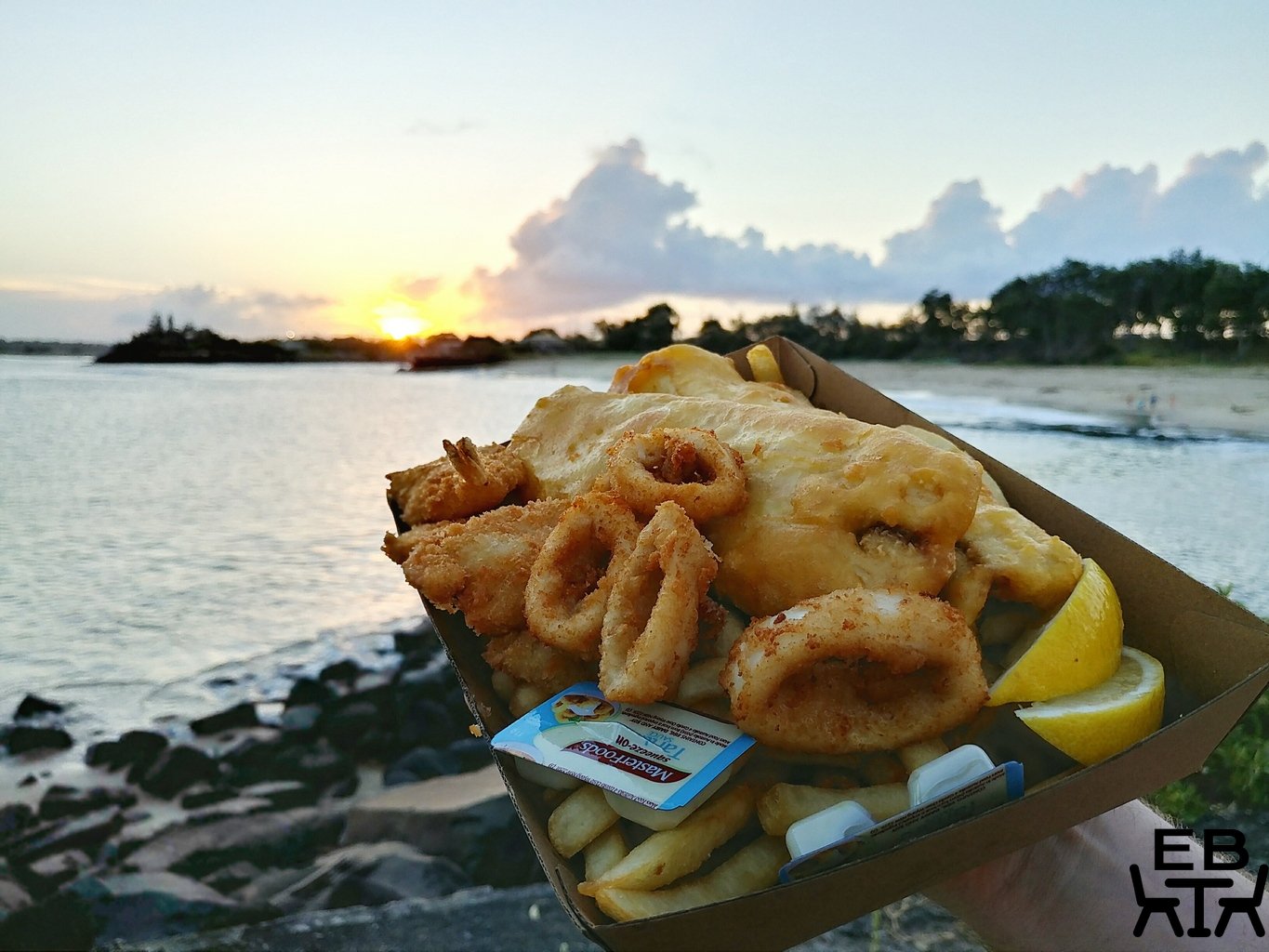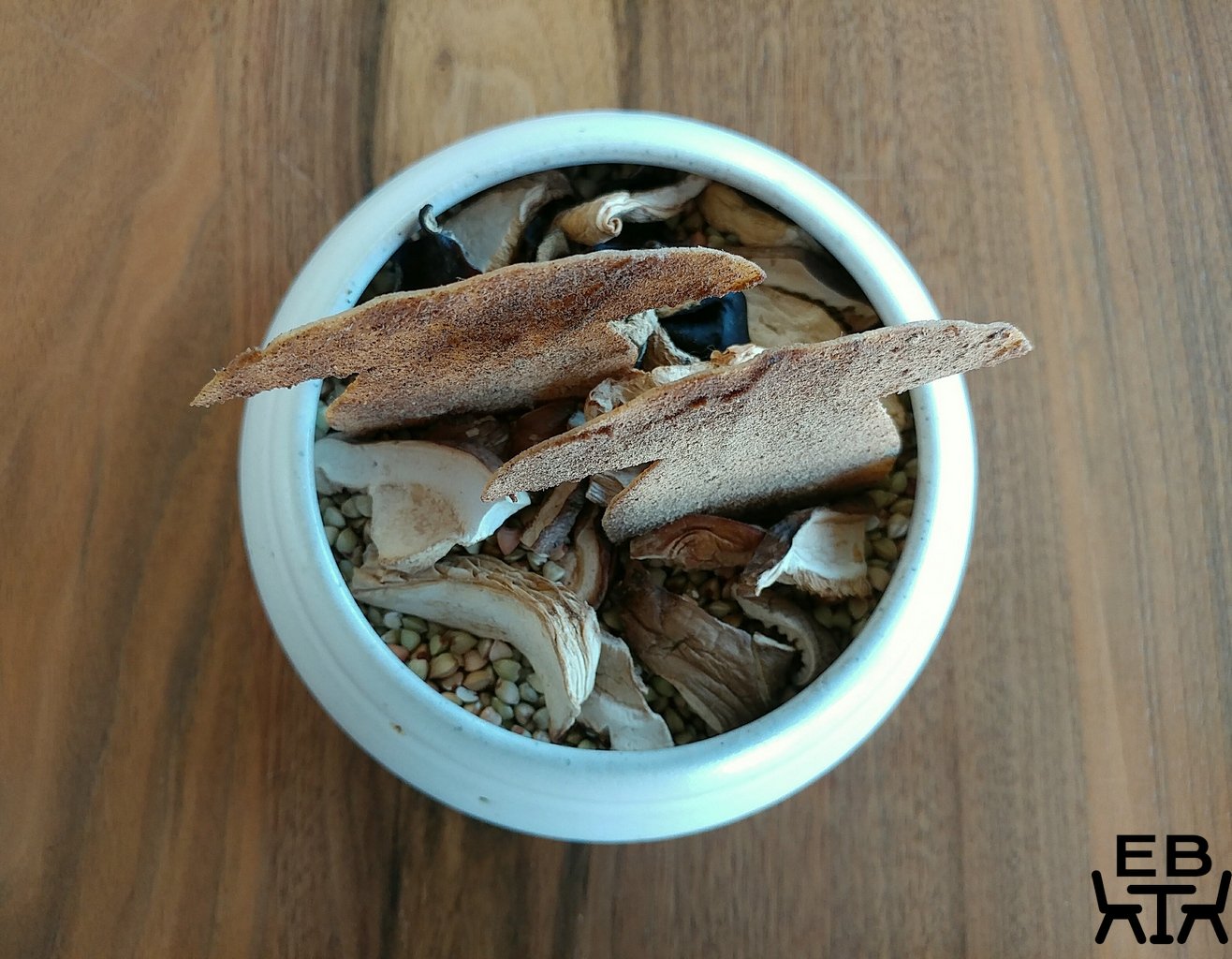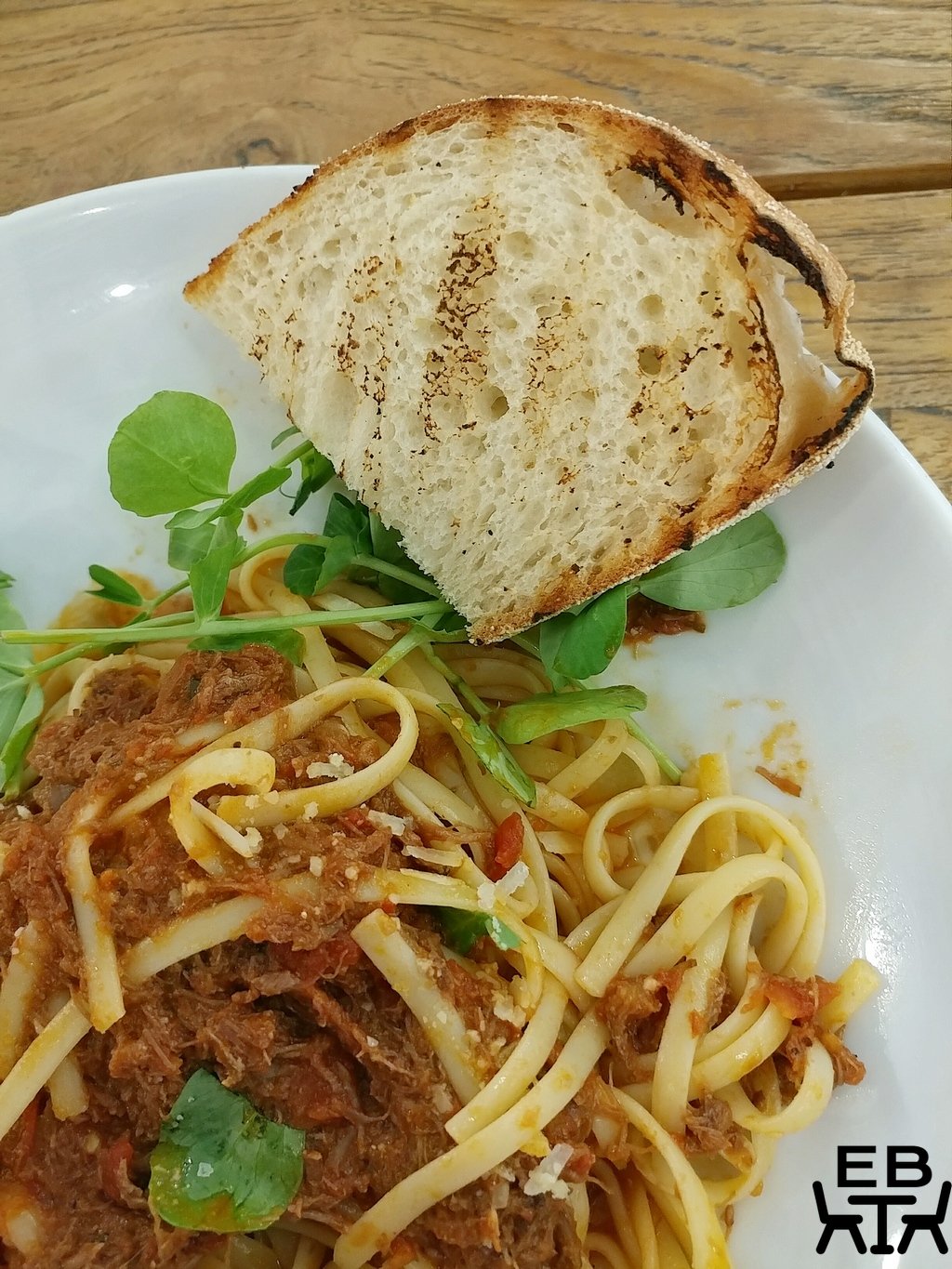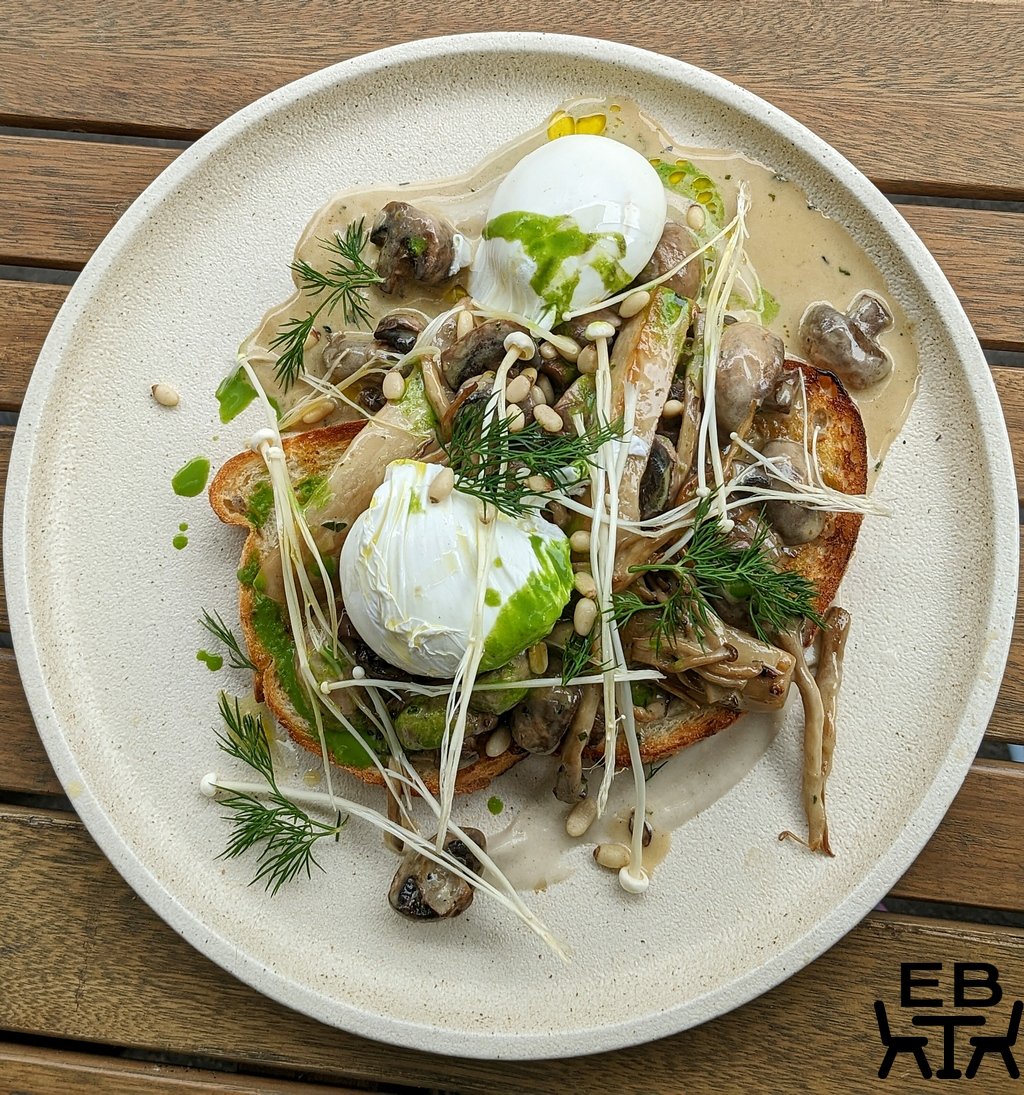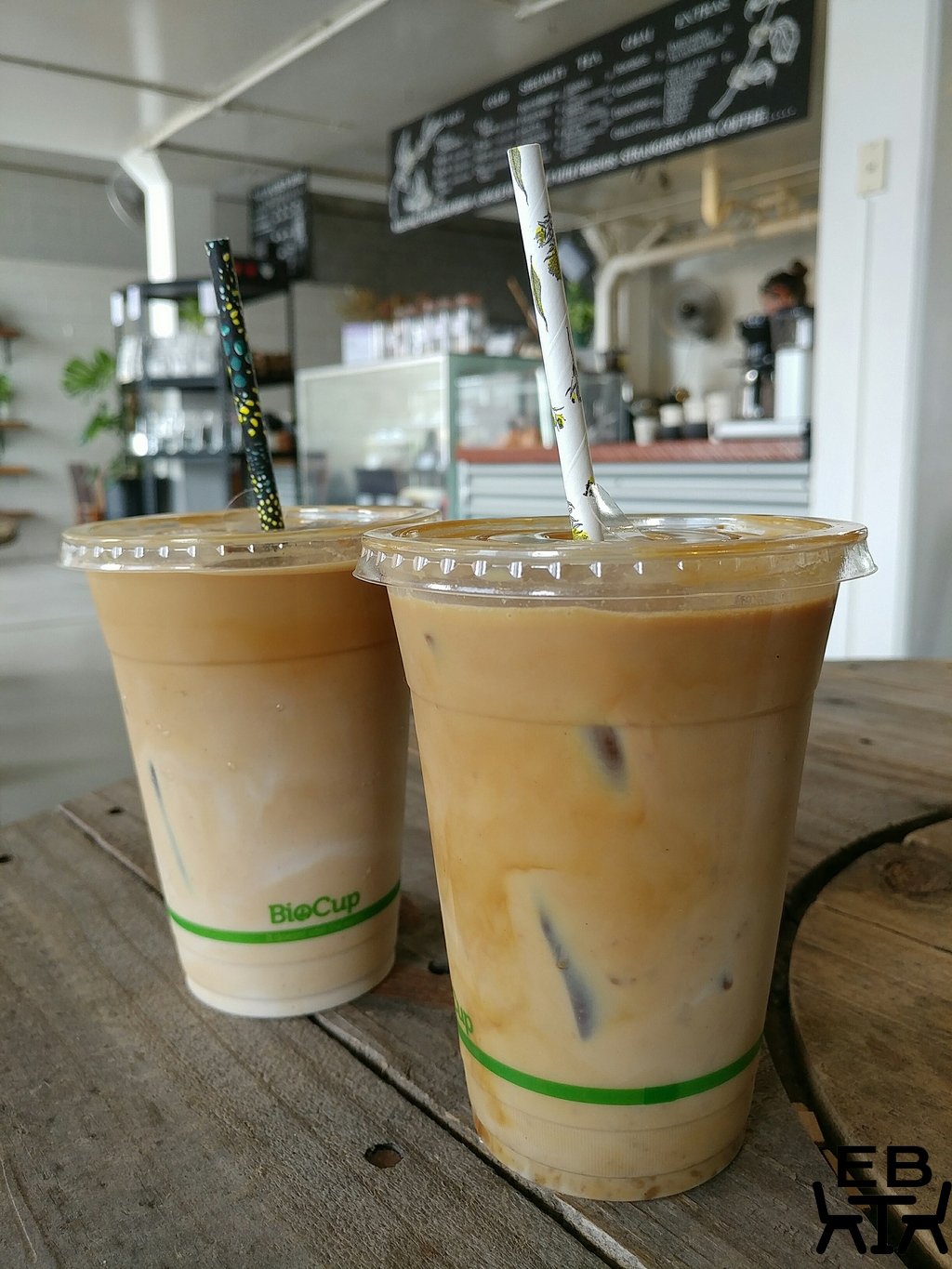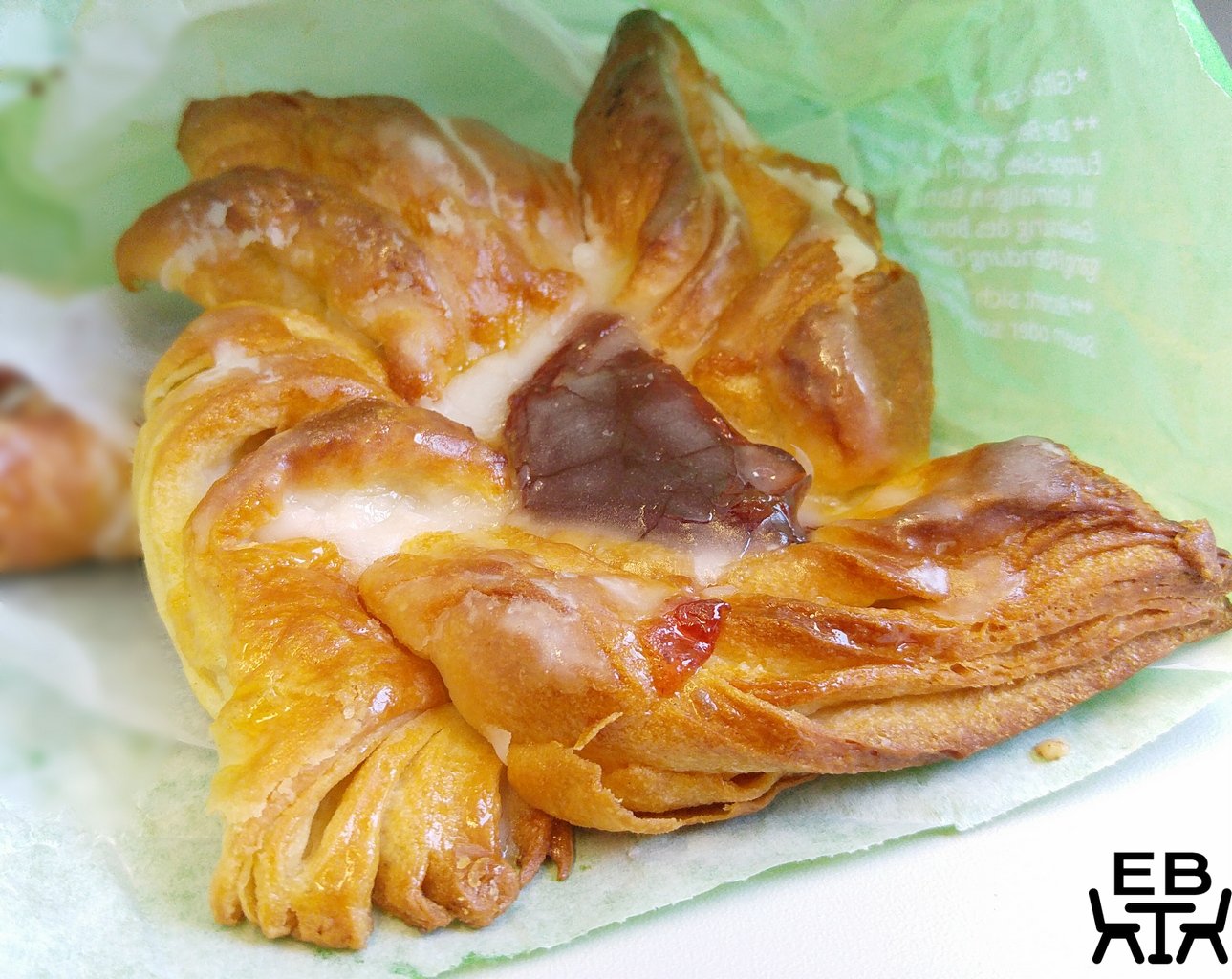Haiku was on our list of places to try for brunch, as their Japanese-leaning dishes looked more interesting than typical offerings. It turned out to be their flipside dinner incarnation, Haiku Kuro, that we visited though. It was formerly Hibiki, in the same spot on Camberwell’s Toorak Road. We never made it to the previous incarnation, but the spirit of Haiku seems similar.
Approaching from the walkway, the signage was quite clear, with “Haiku” on a lighted sign hanging above, printed on the door, and also on blinds in the window. Right next door to it is Haiku Future, which you will find to be a modern take on a Japanese convenience store if you stop by in the daytime.
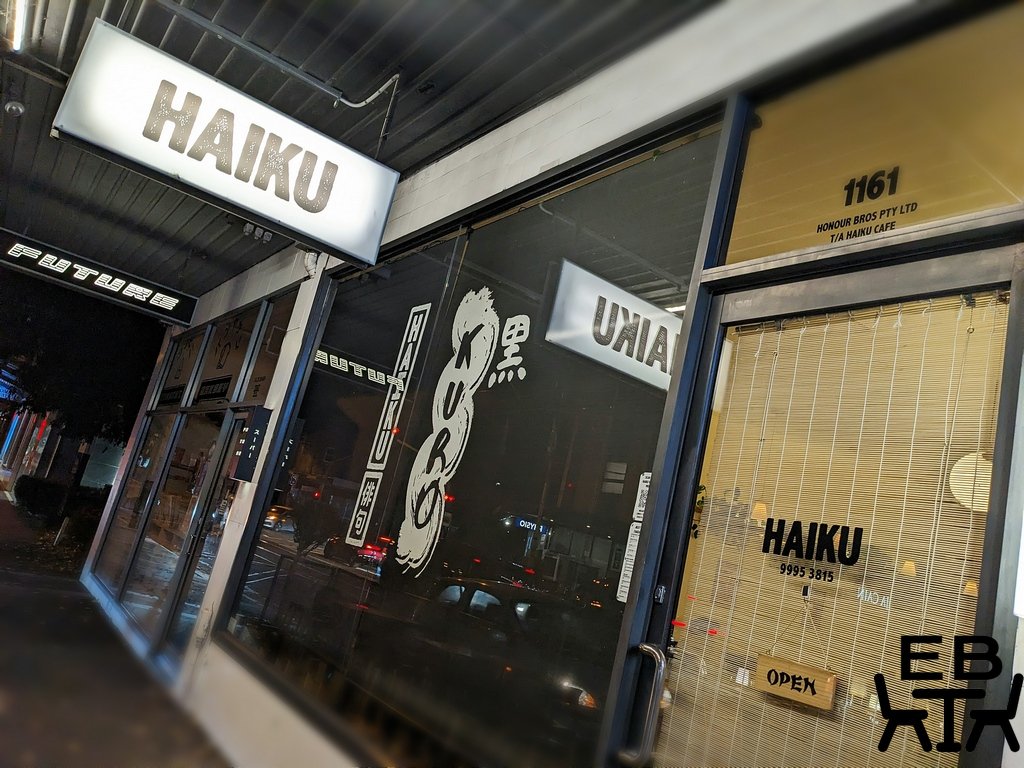
We weren’t initially sure about Haiku Kuro though, as the dark blinds drawn down over the glass front and the bamboo blinds across the glass door gave little clue as to whether it was open or empty. The little “open” sign on the door was encouraging though.
Once we went through the door though, we found a buzzy hive of activity. We confirmed our booking with staff, and were promptly shown to a table.
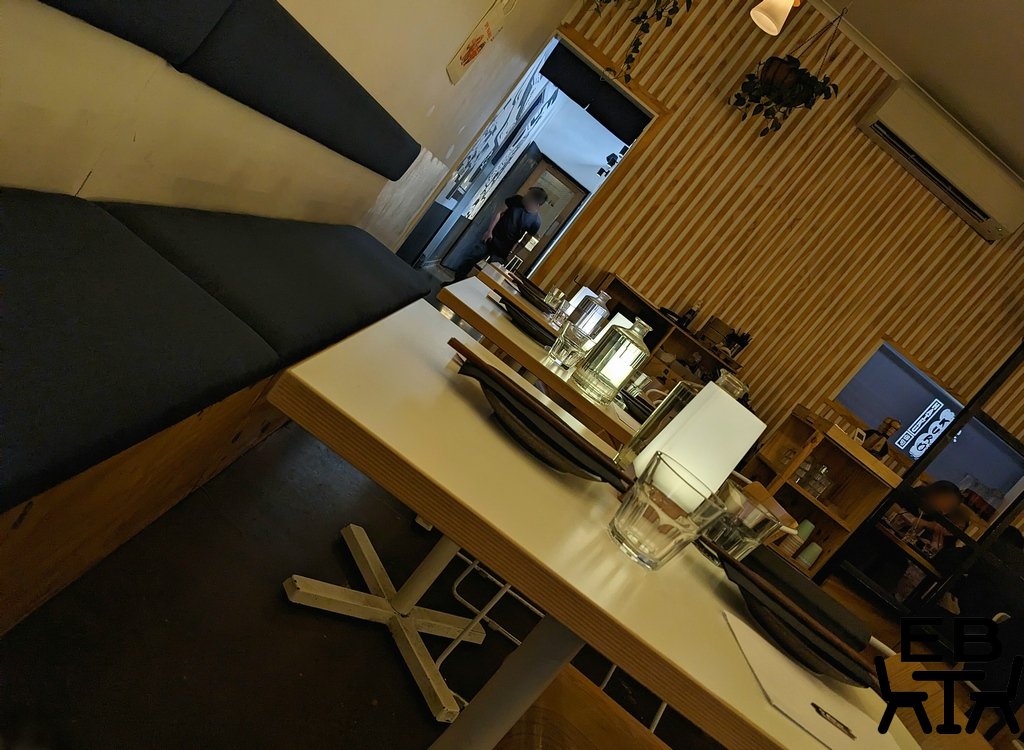
Haiku Kuro is pitched as an izakaya-style restaurant. It has a more upmarket feel to it than a casual pub though, with softly glowing globe pendant lights suspended above the bar counter lending it an art deco feel, and light wood paneling and greenery making it more cosy.
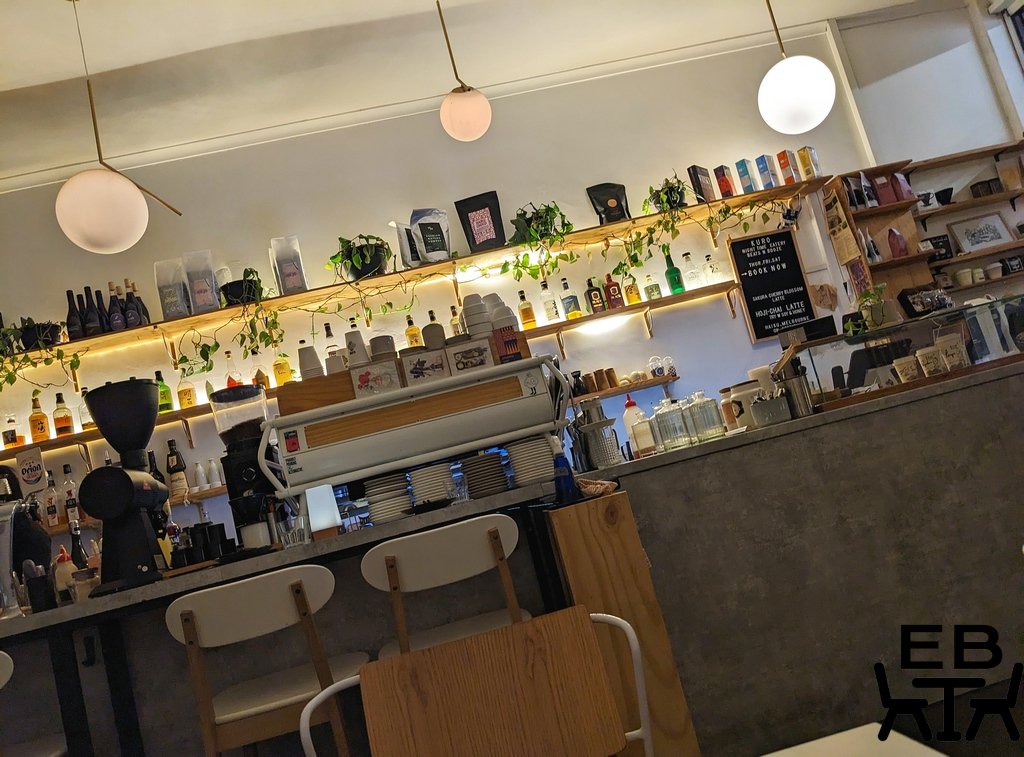
The food menu is across two pages in simple black on white, with dishes divided into red-accented sections of Snacks, Small plates, Sea (specifically seafood items), Greens, Rice, Noodle, and End (desserts to finish). There is also a QR code at the bottom that you can scan to see photos of the dishes, to get an idea of what you will get – it takes you to their Mr Yum site where you would also be able to order takeaway dishes for another time.
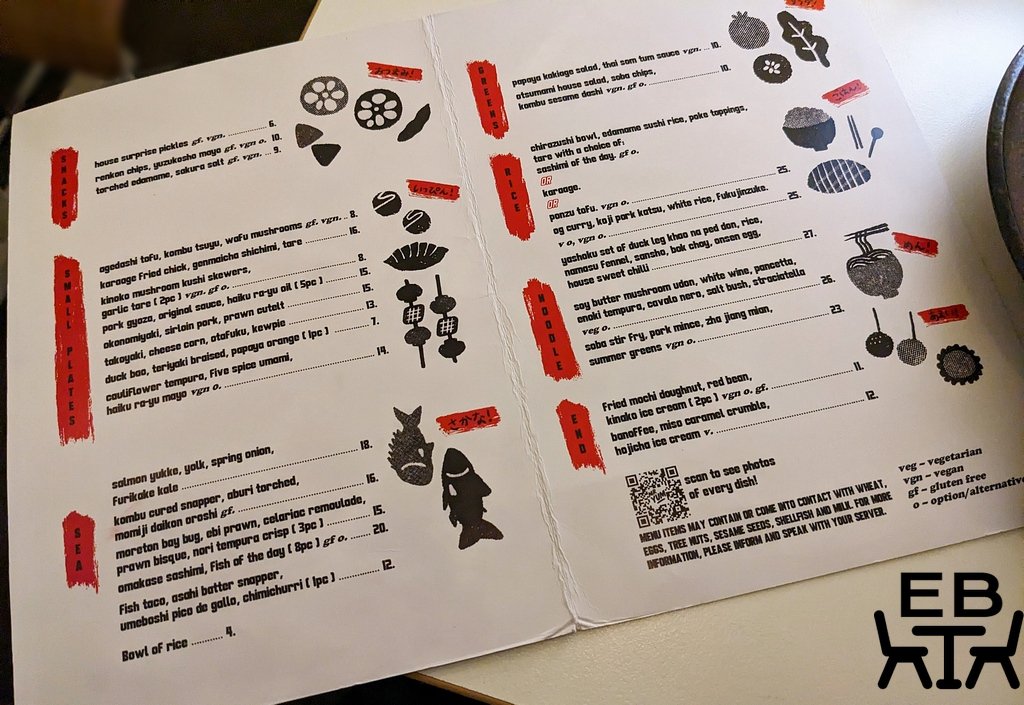
They have a separate drink menu, a black-bound folder with many more pages. This should be expected, as an izakaya is about the drinks as much as the food. There was a range of spirits on the shelves behind the counter in readiness. Not on the menu, but something we ordered anyway because we thought it would be legit there, and despite the unusual time for it, was a matcha latte.
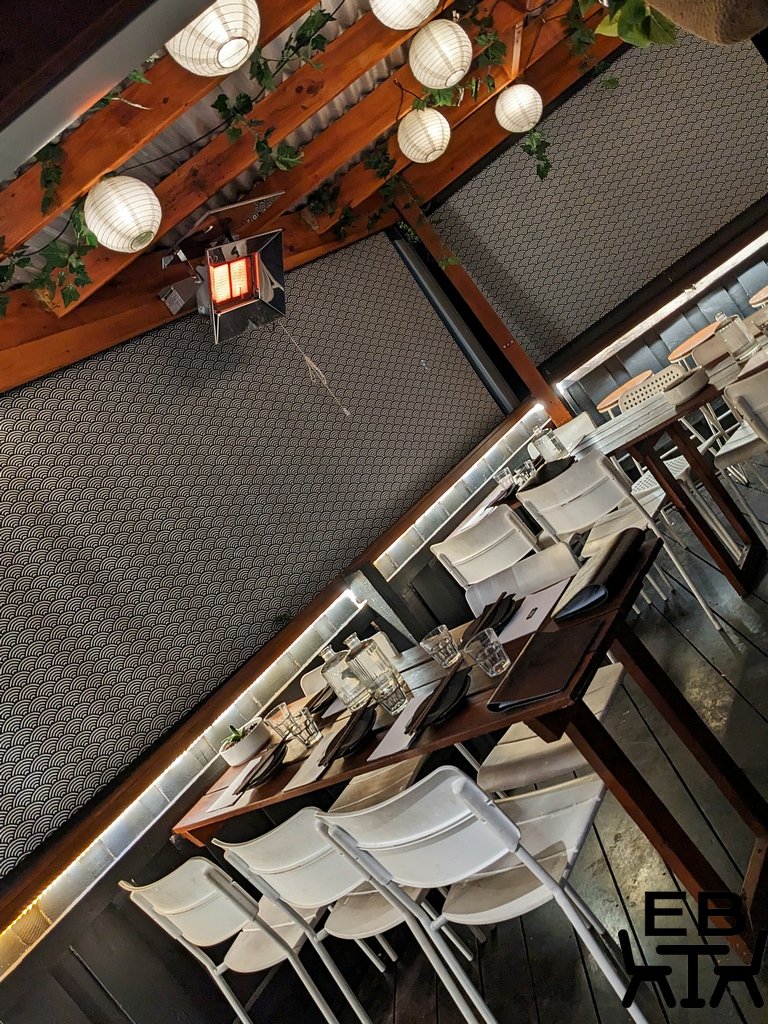
This did indeed turn out to be a proper soy matcha latte – not the premixed mostly sugar stuff we had been disappointed by at a couple of cafes recently. It had a lovely latte art rose on it, on the finely textured microfoam. It had the right matcha flavour and good richness, with just a hint of sweetness.
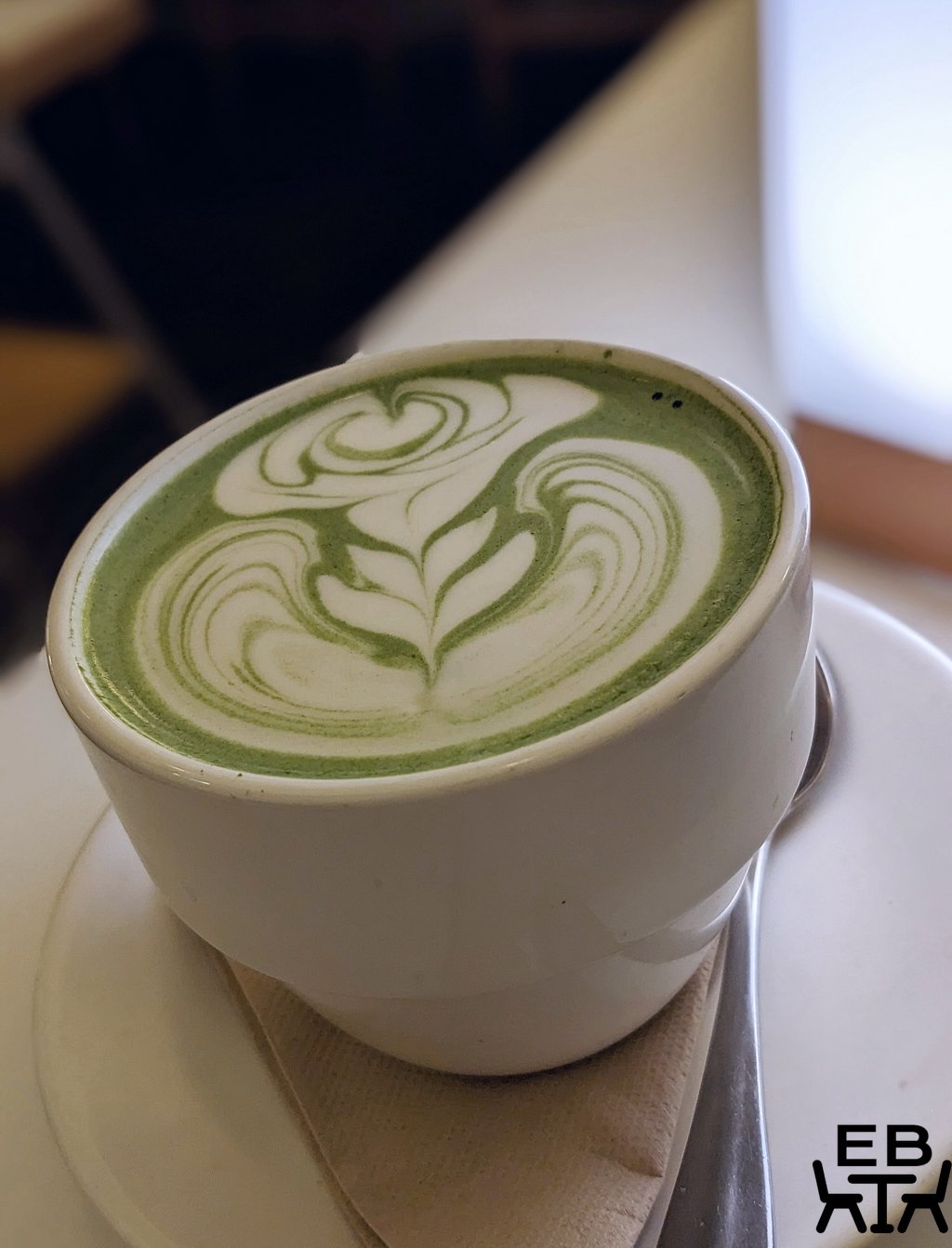
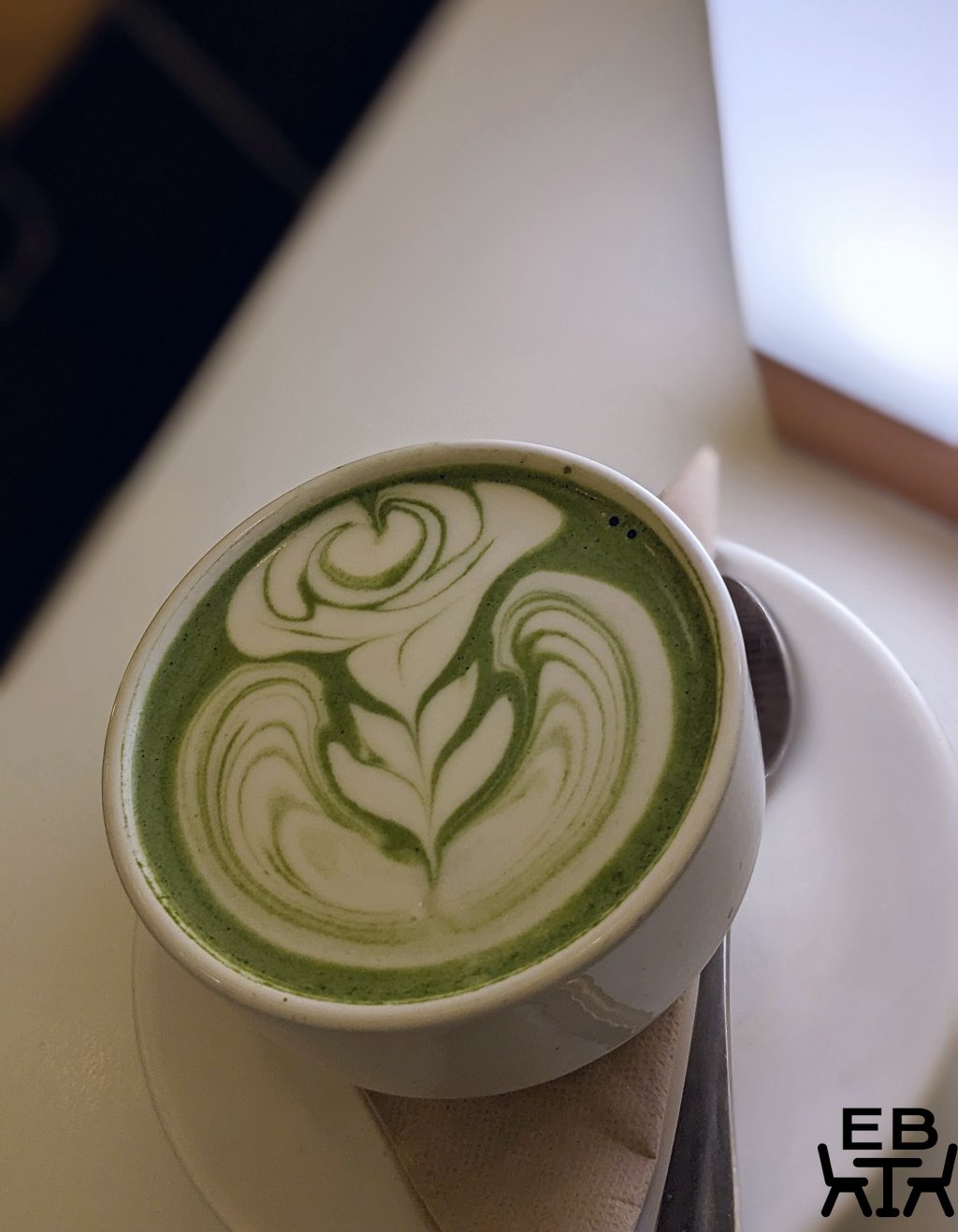
We ordered a range of food items from the various sections of the menu. We managed to temper our enthusiasm a bit, but thought we managed to get a good sampling.
From Small plates:
Cauliflower tempura, five spice umami, haiku ra-yu mayo. These were served piping hot, and were coated in a light batter. The cauliflower pieces were divided up so that there was a good ratio of the cauliflower to batter. You could taste the moreish five spice seasoning, and the mayo was a good creamy contrast.
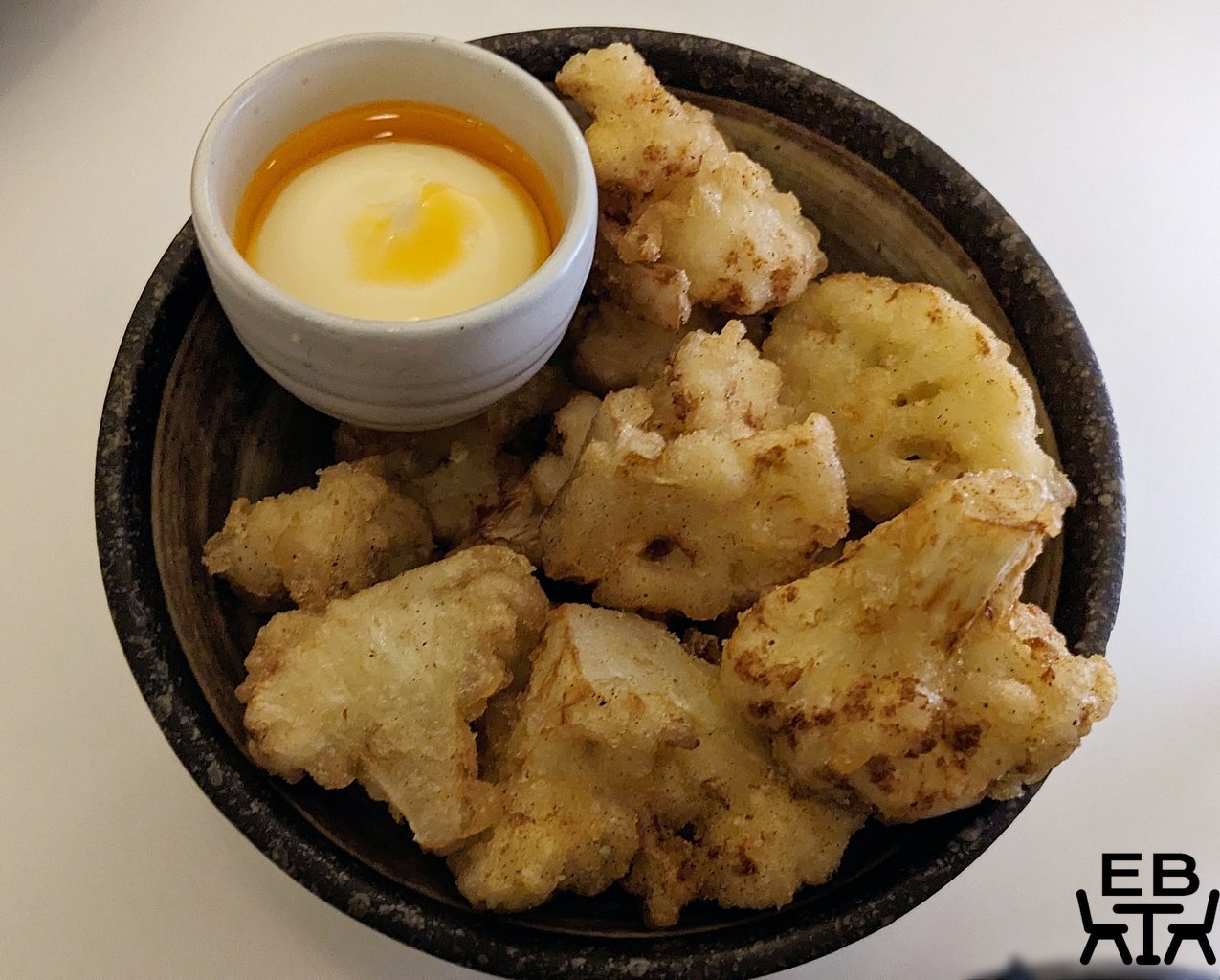
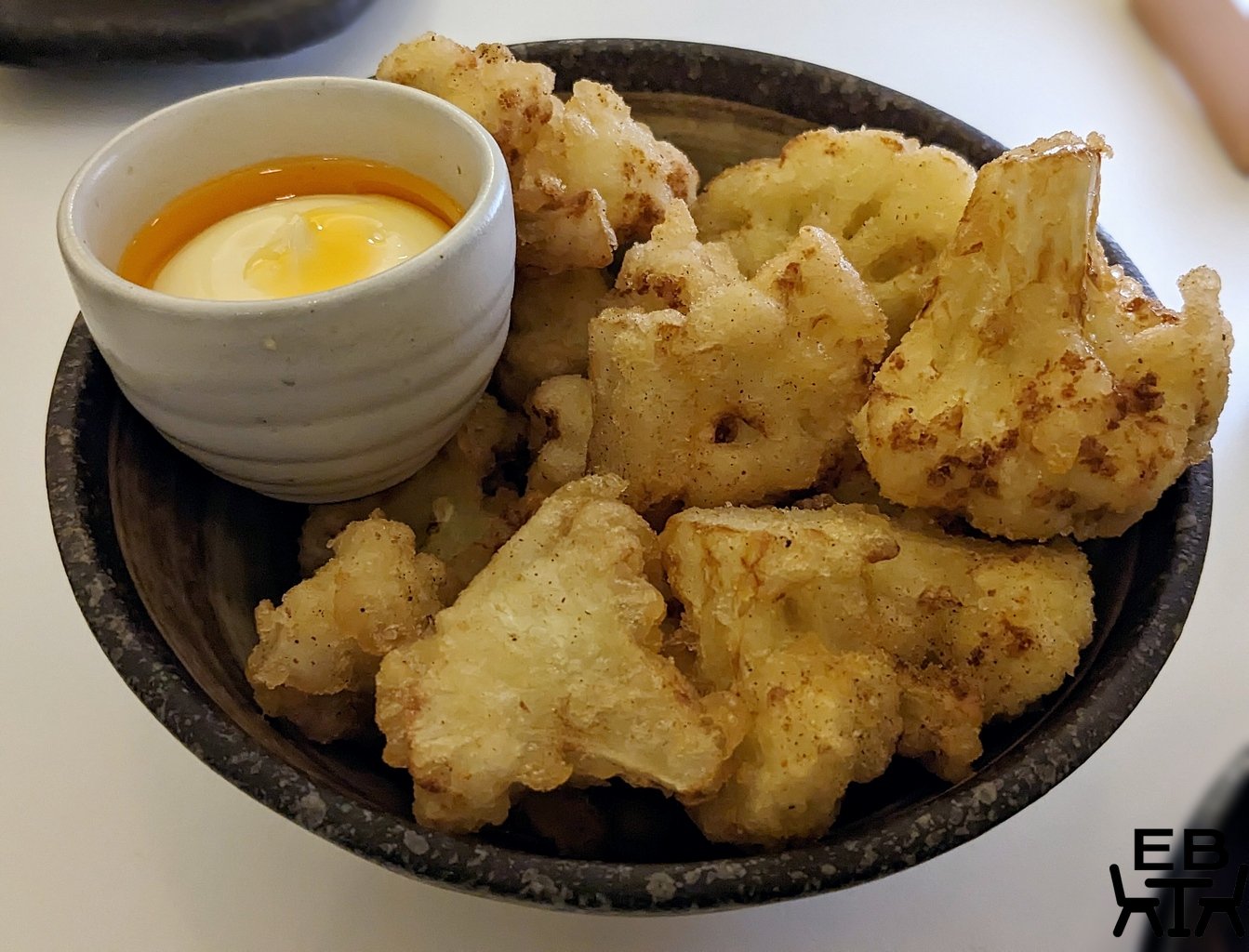
Okonomiyaki, sirloin pork, prawn cutlet. These were served as a stack of two mini pancakes on the type of spatula that okonomiyaki would usually be prepared with. They were topped with the classic toppings of mayonnaise, okonomiyaki sauce, bonito shavings, and a sprinkling of nori flakes. It was well sauced without being soggy, and again, there was a good ratio of shredded vegetables to batter. We could taste the flame char on the pork pieces, and the piece of prawn still had a bit of spring to it. The shredded ginger definitely had fire, so were perhaps an optional addition – fortunately you could separate them out, rather then them being mixed all through.
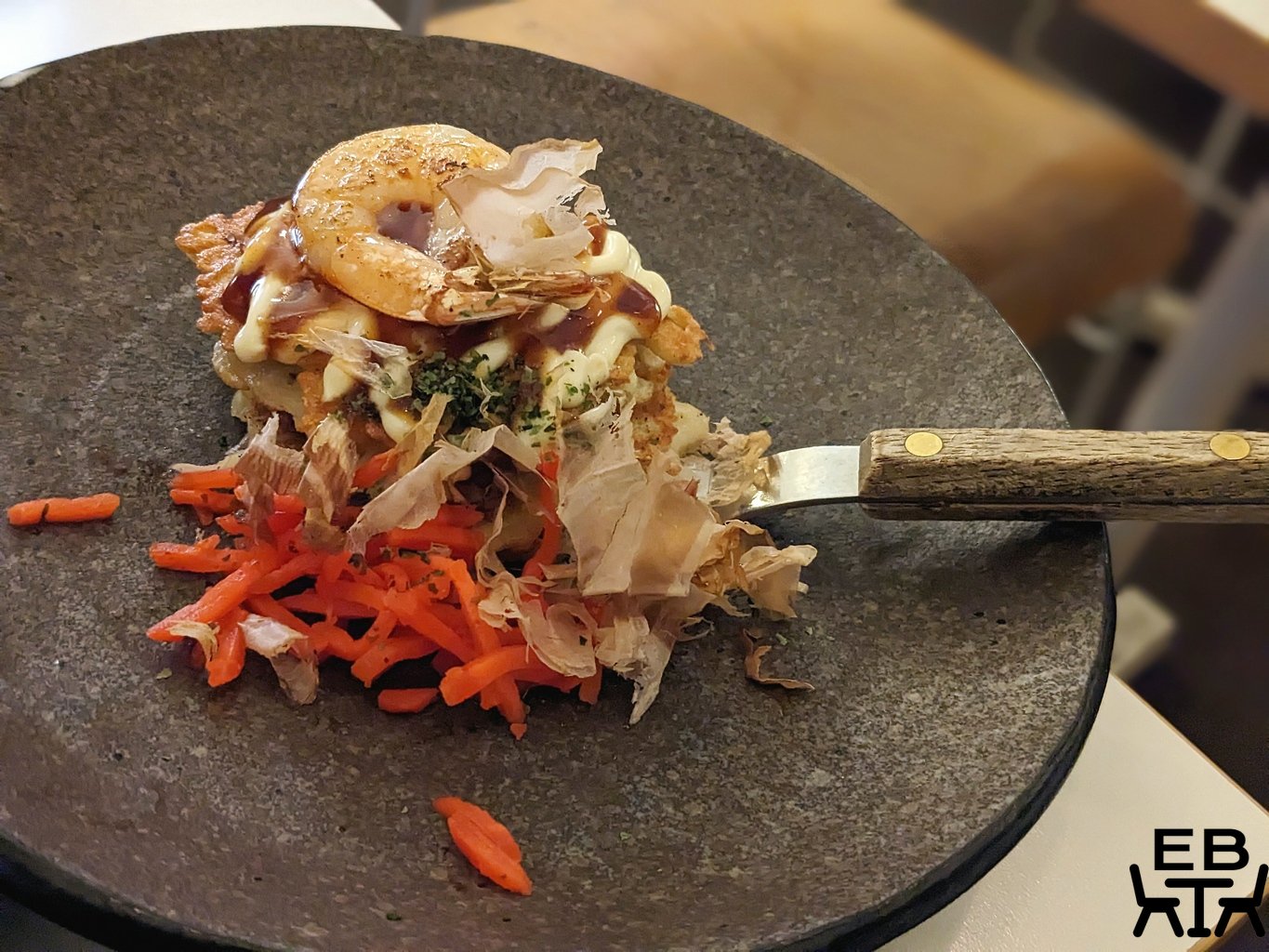
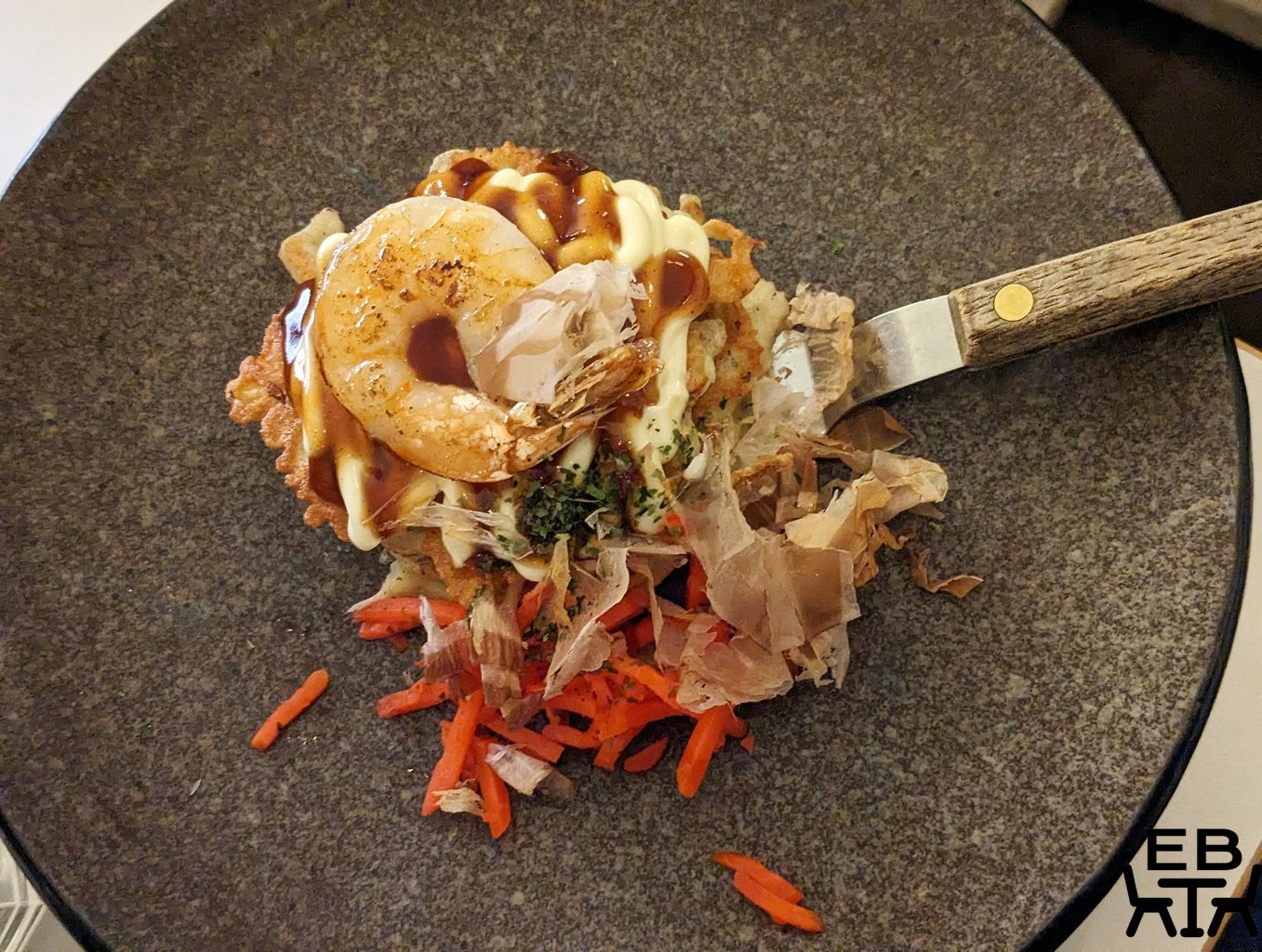
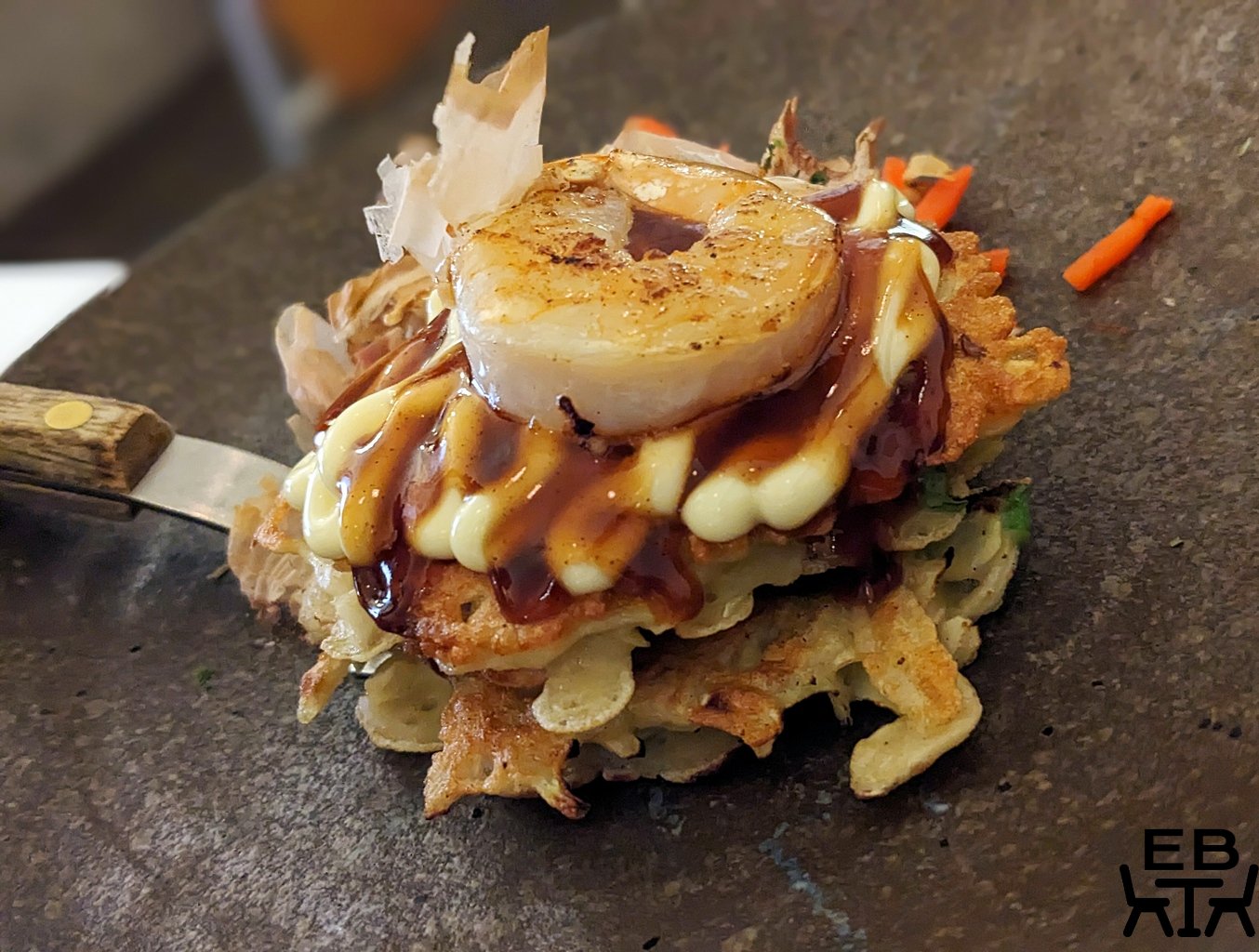
From Sea:
Salmon yukke, yolk, spring onion, furikake kale. This was a cross-cultural interpretation. Yukhoe is a Korean raw beef dish, like a tartare. Here, they changed up the protein, and adjusted the dressings (flavours that might work for beef would overpower the salmon). It was an adorable work of art on the plate, presented as a flower, with the salmon pieces forming the petals, the yolk as the centre of the flower, and the kale as the leaves and stalk. It worked quite well mixed together, with the yolk giving a thicker texture to the sauce, which had soy, garlic, and sesame flavours. The kale leaves had air-fried wafer crispness.
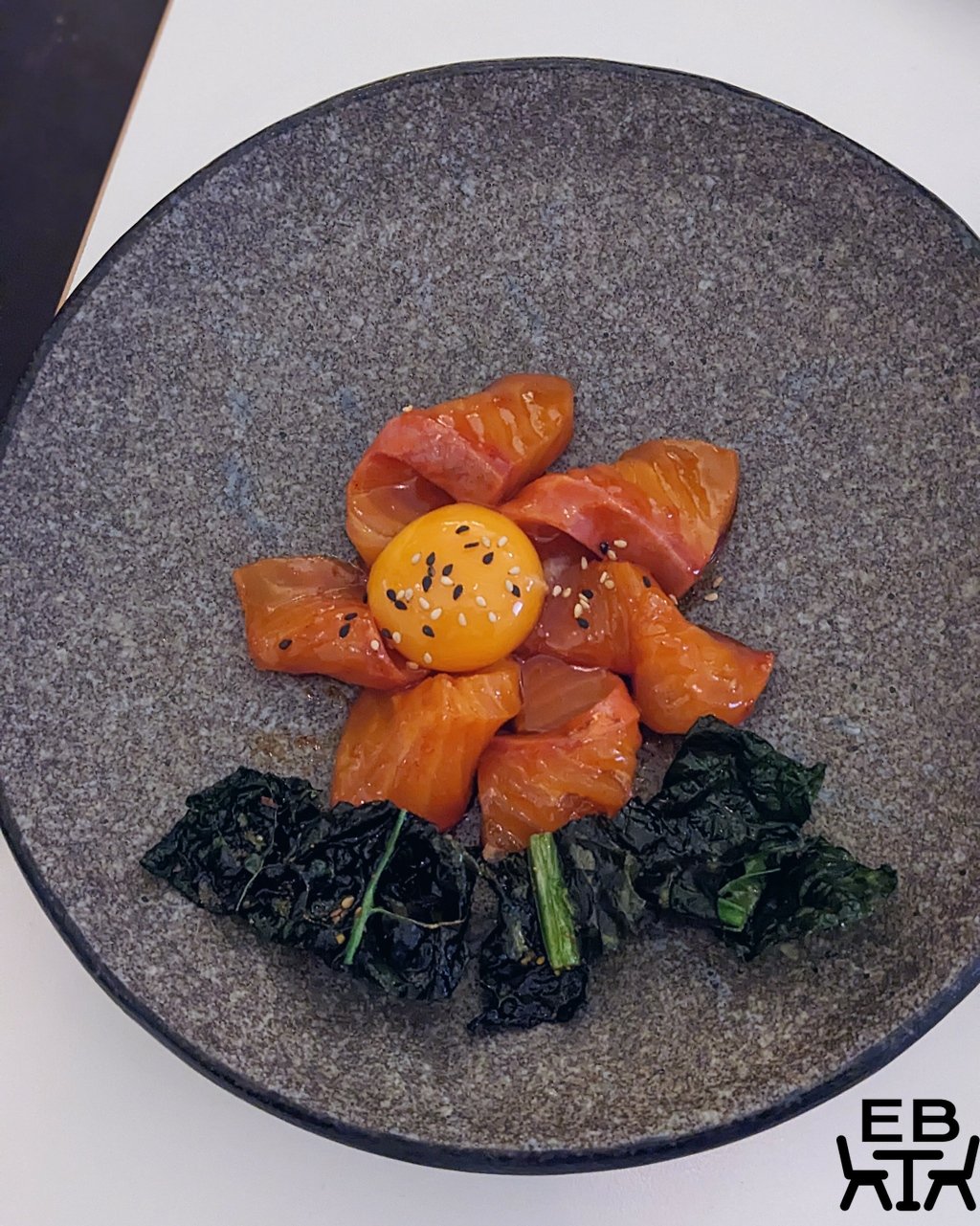
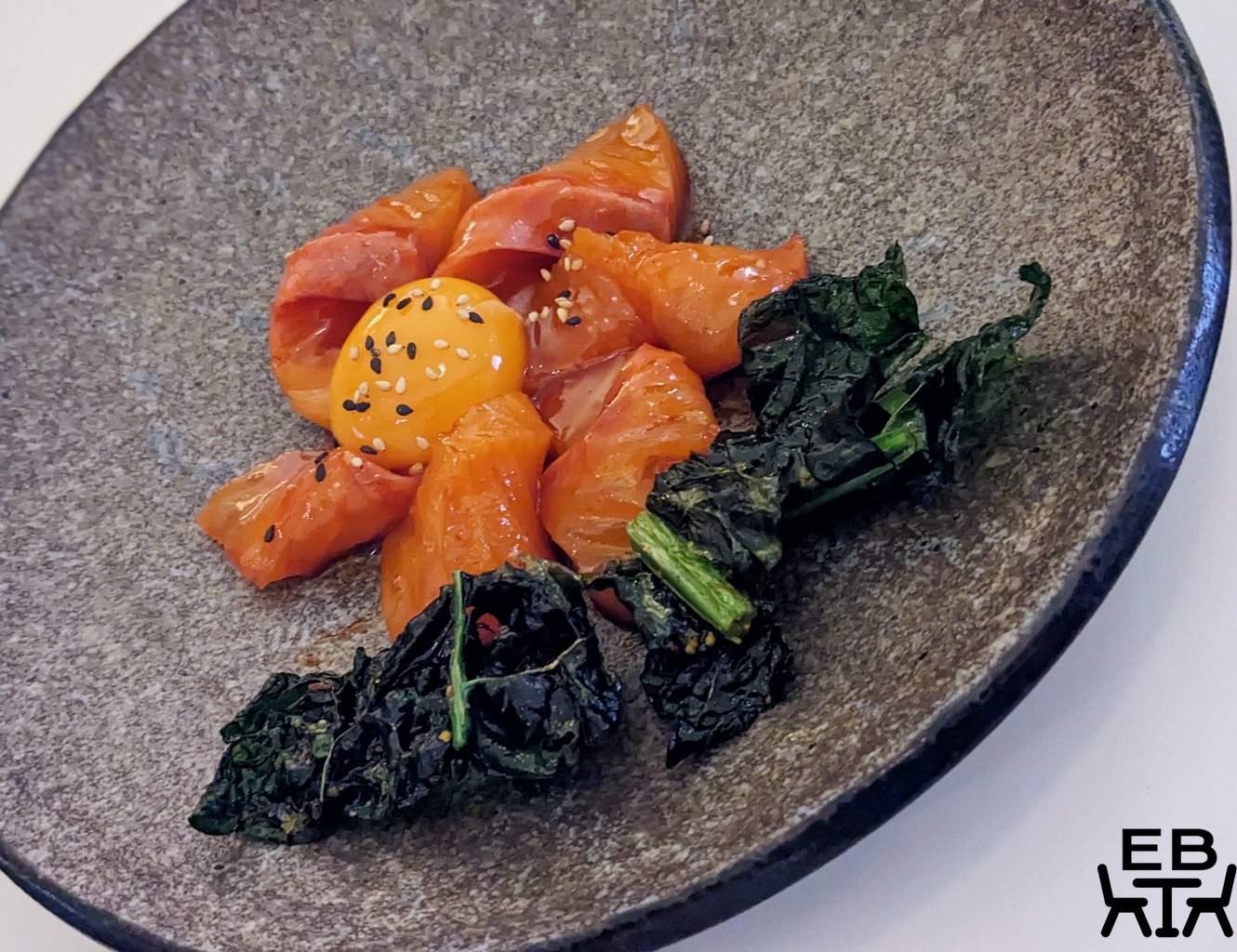
Moreton bay bug, ebi prawn, celeriac remoulade, prawn bisque, nori tempura. This fascinated us the most amongst the seafood options, with its variety of components. They were like a canape item, with a battered and fried nori wafer forming the base that the seafood elements were layered upon. The Moreton bay bug and prawn were in small pieces rather than large chunks, but you could still appreciate their textures.
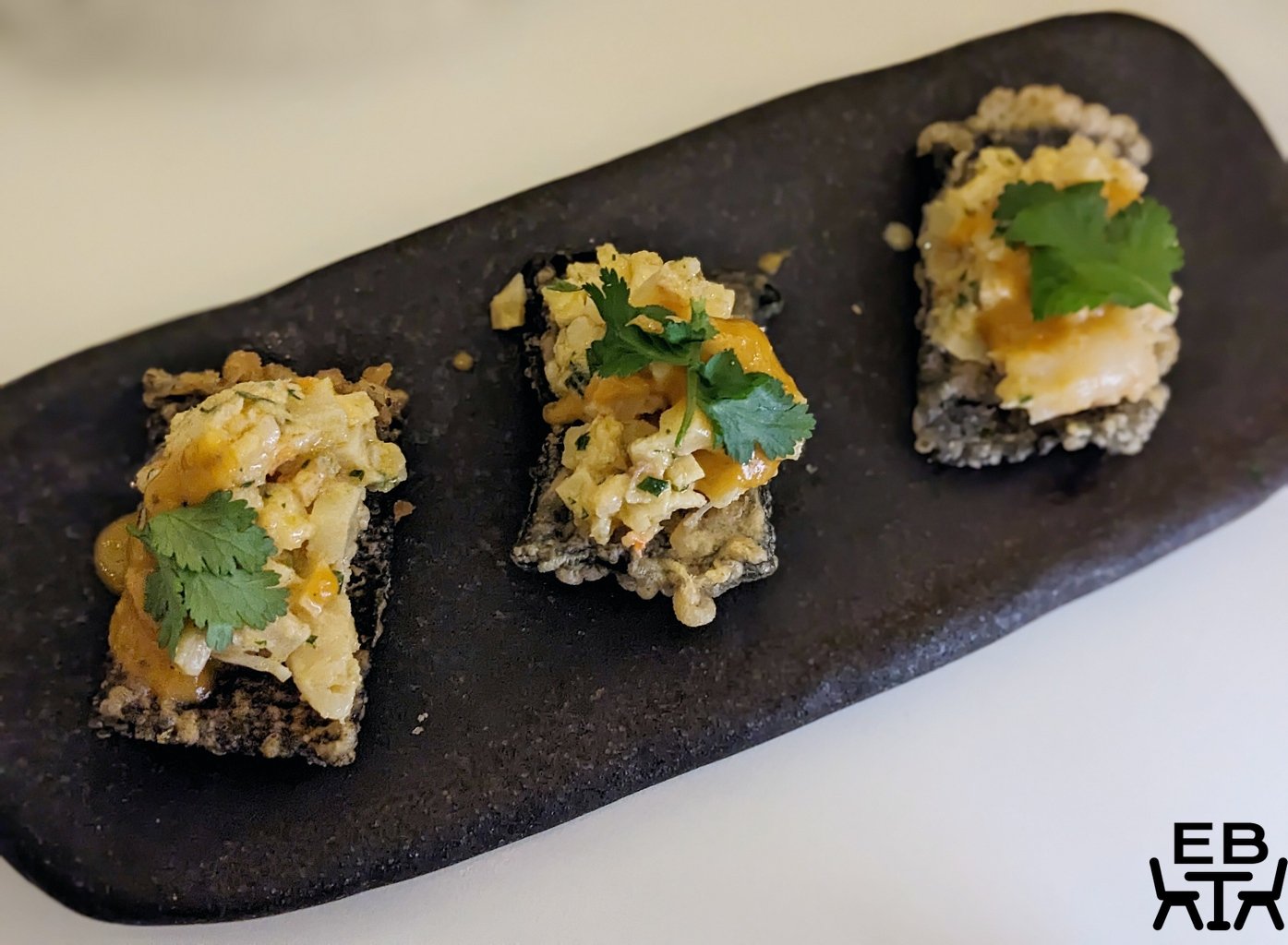
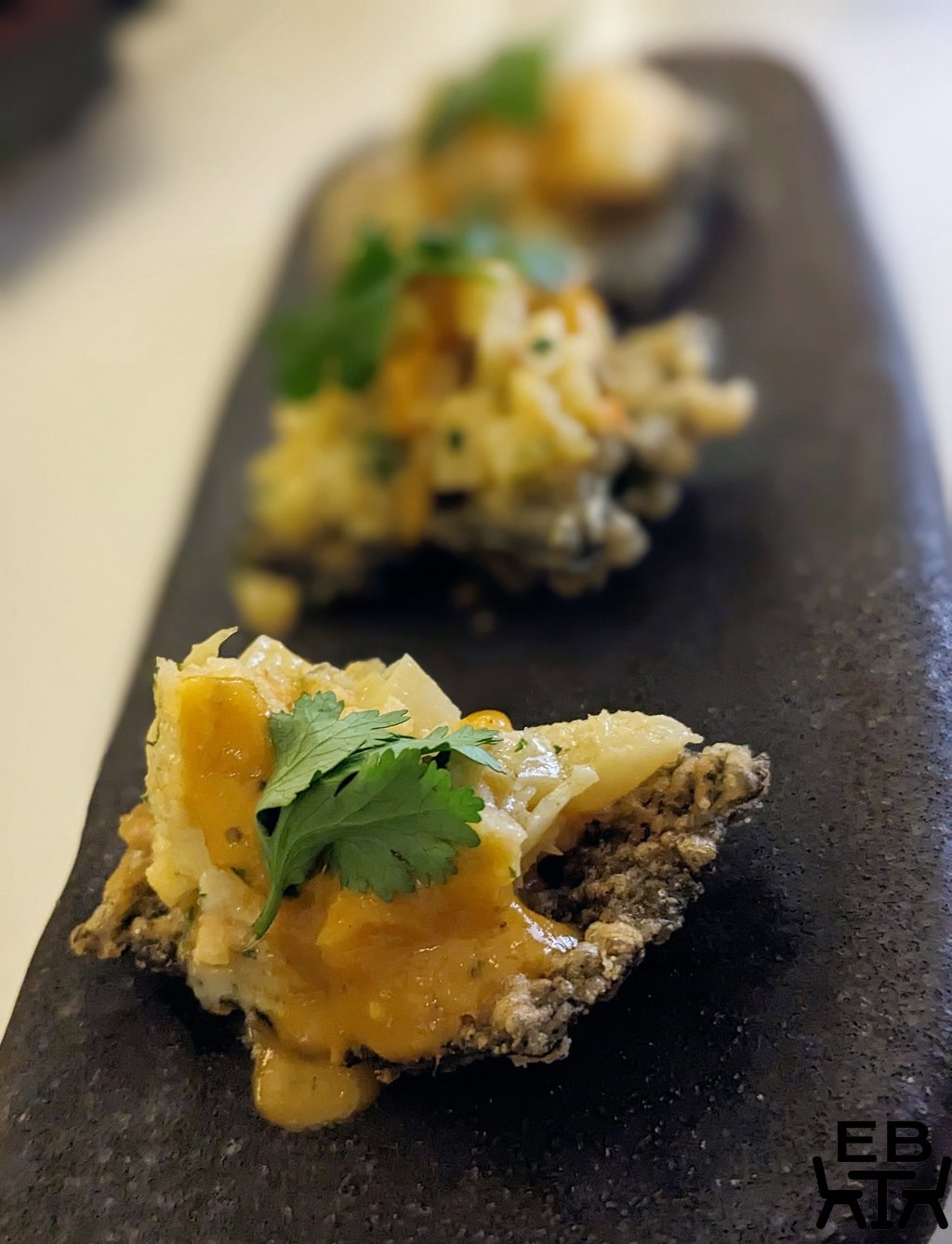
Rice:
Chirashi zushi bowl, edamame sushi rice, poke toppings, tare with karaage (alternative options were sashimi of the day or ponzu tofu). This was a little confusingly named, as chirashi is usually pieces of sashimi on rice, and poke is usually diced seasoned raw fish on rice. In the instance where you don’t have any fish, can you still call it a chirashi bowl? In any case, there was a mix of components to it, including avocado, pickled vegetables, pickled ginger, sliced omelette, nori sheets, and blobs of kewpie mayo. There was also a little dish of sweetened soy sauce to pour over everything and mix in. The karaage chicken was nicely seasoned, and had tender meat. It was quite a flavourful combination.
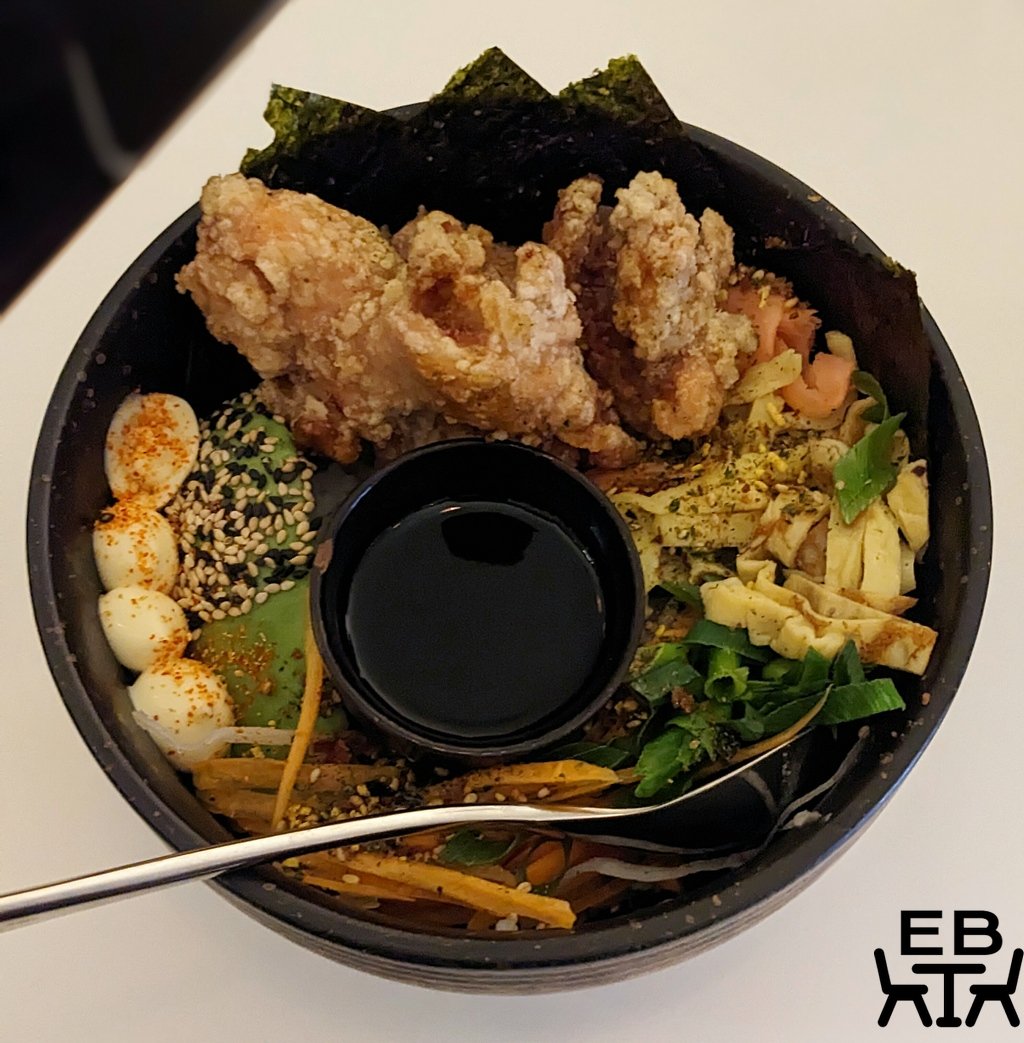
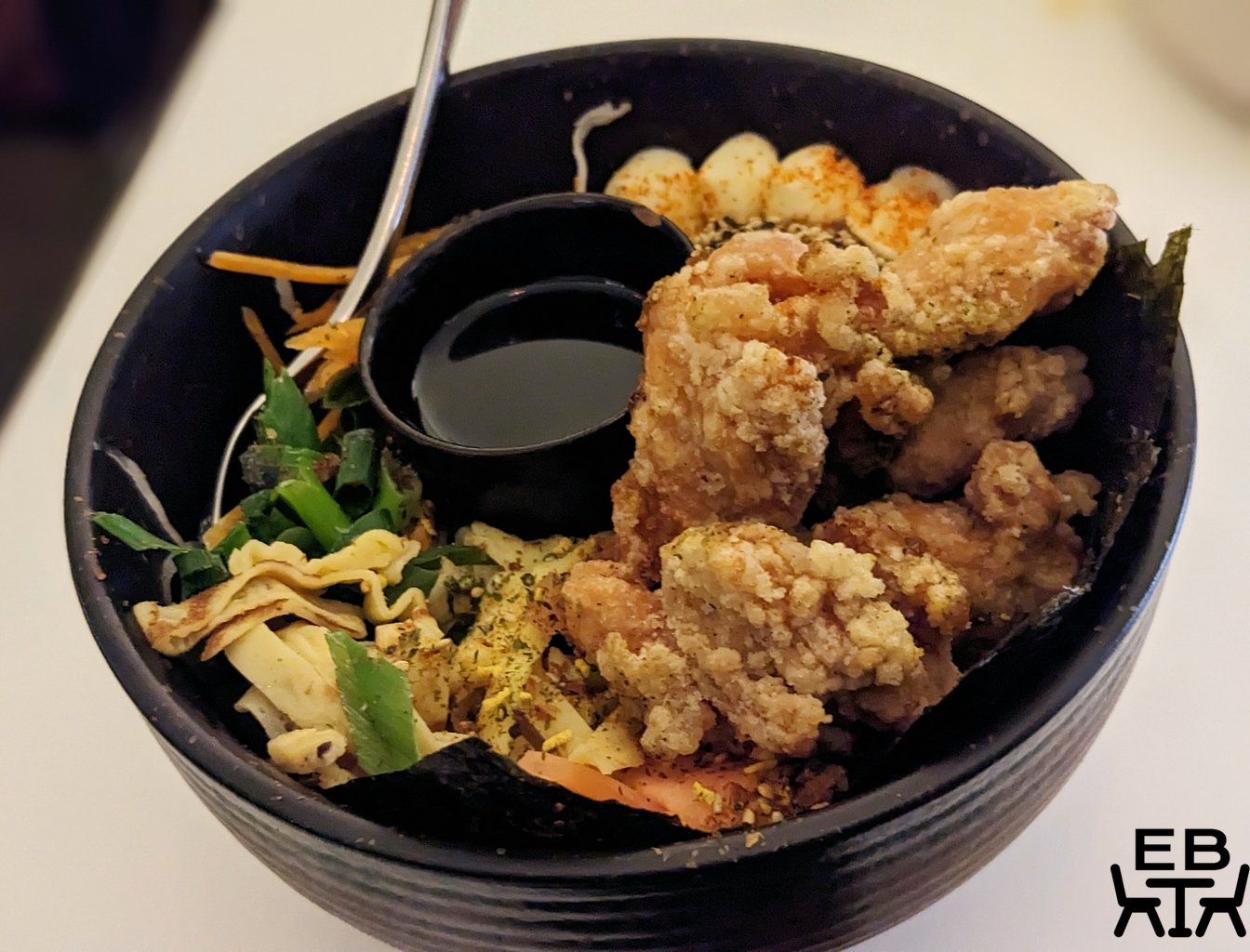
Noodles:
Soy butter mushroom udon, white wine, pancetta, enoki tempura, cavalo nero, salt bush, straciatella. We were drawn to this dish as we read through the menu, as it had an unusual mix of ingredients that you don’t typically see together. This was quite artistically presented, with the tempura enoki mushrooms placed as fans on opposite sides of the bowl. It was an east meets west dish, eating almost like a mushroom pasta when everything was combined. Once the straciatella was mixed through, it imparted a creamy sauce texture. The udon had a springiness atypical of pasta, but that served as a point of difference. There was good flavour from the garlicky vegetables and hits of salt from the pancetta.
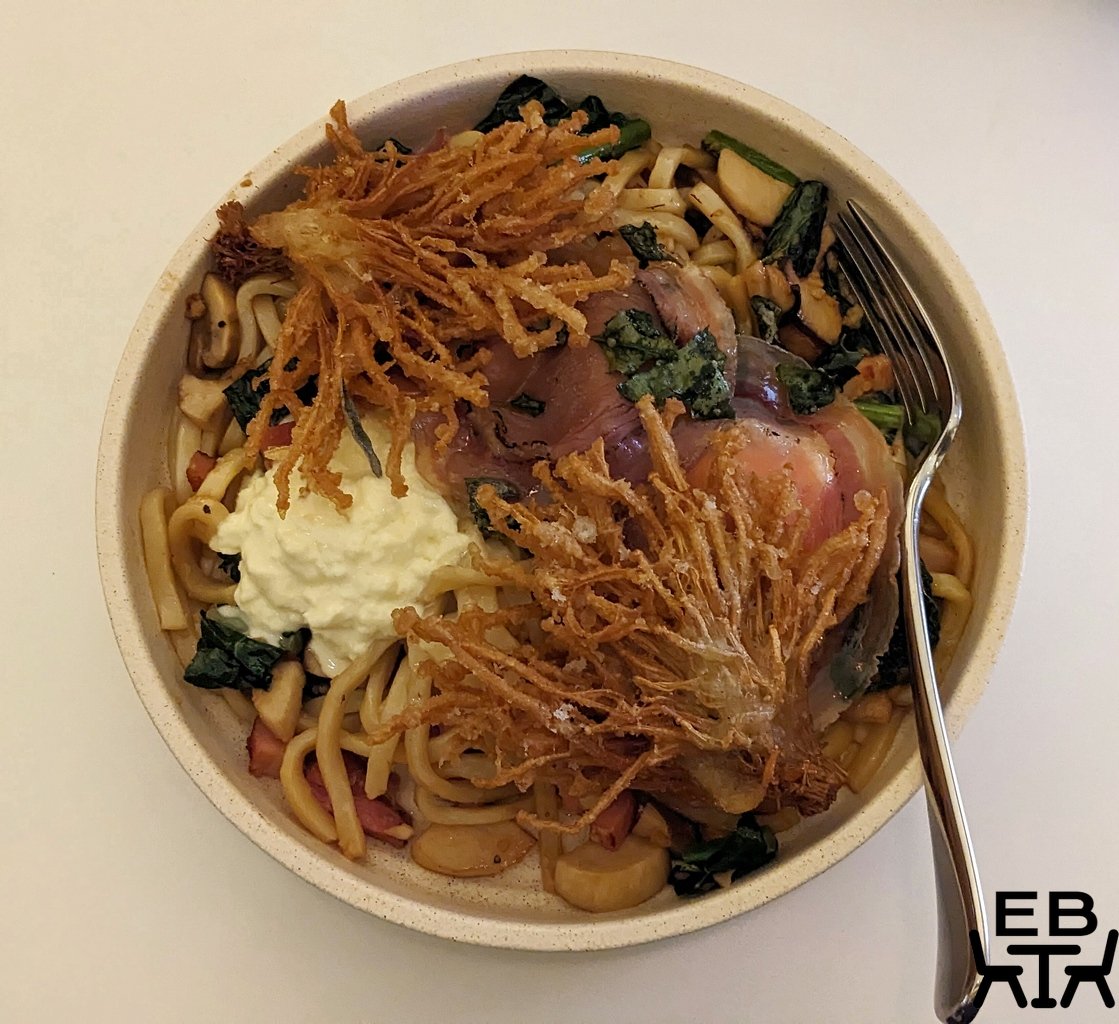
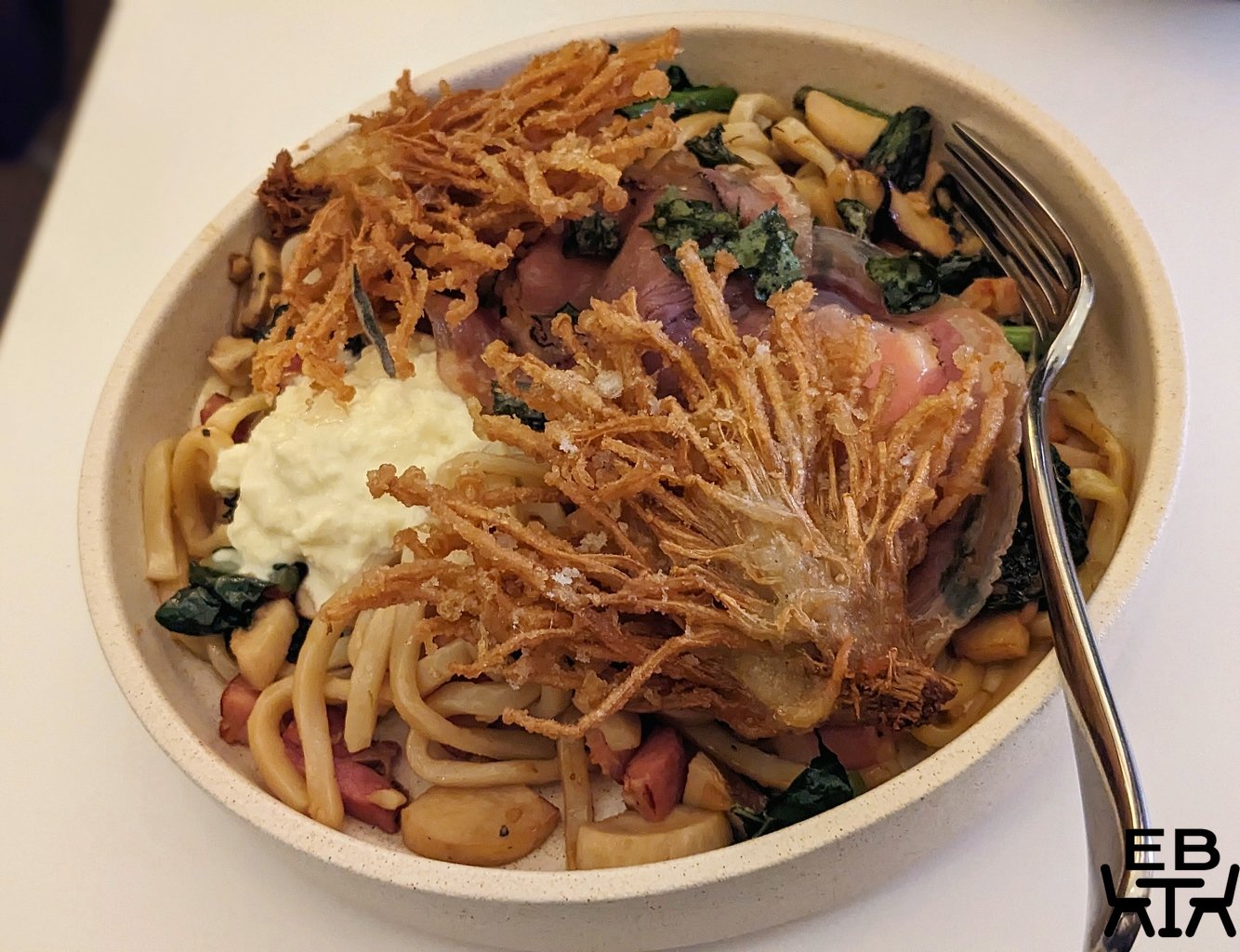
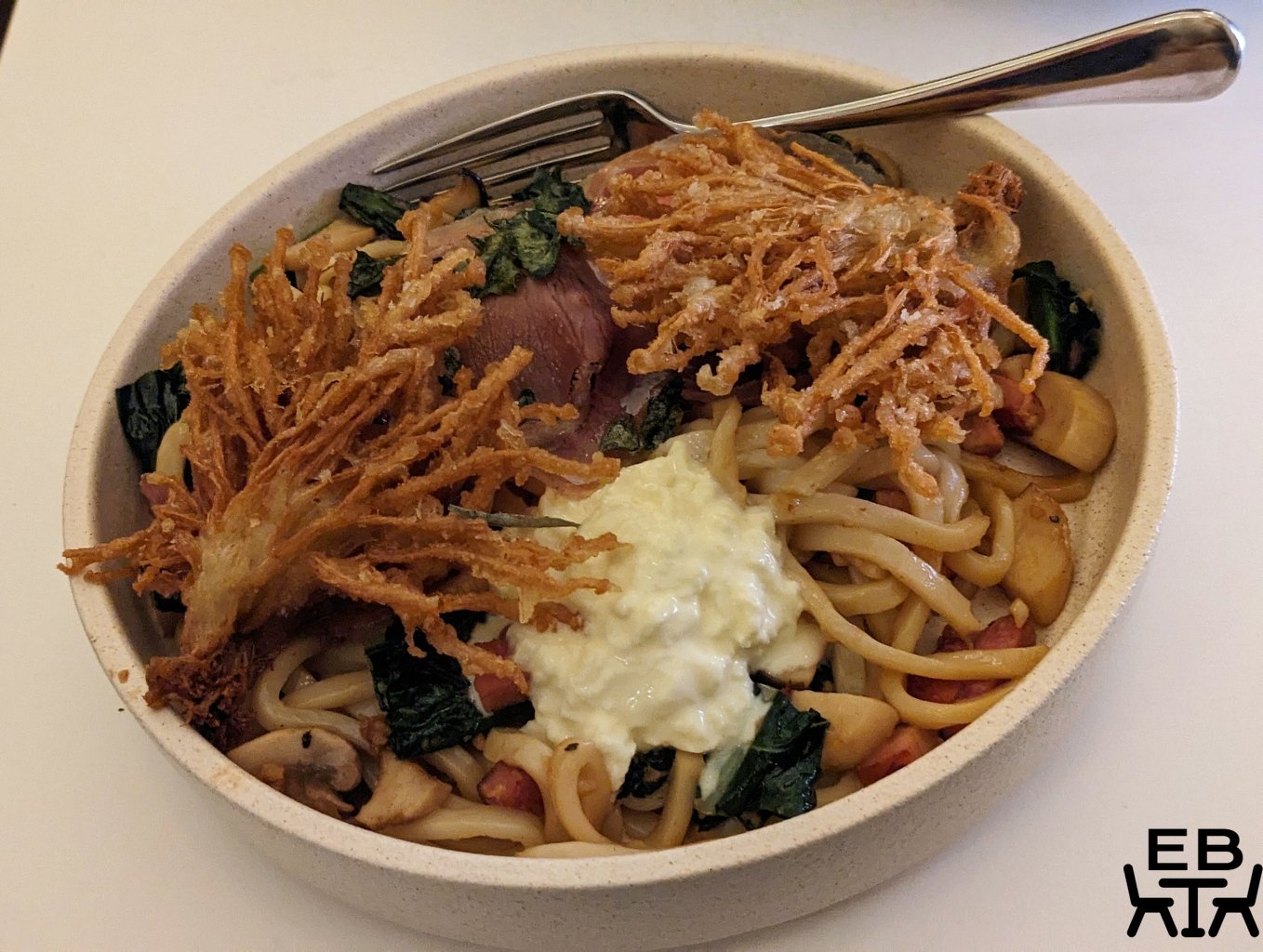
End:
Fried mochi doughnut, red bean, kinako ice cream. Two little doughnut balls were served on a platter, with a scoop of ice cream. Rather than actually being kinako (roasted soybean flour) ice cream, like you might get a matcha or black sesame ice cream, it was really vanilla flavoured ice cream with kinako powder sprinkled on top. The doughnuts were still warm, puffy on the outside, and chewy and squishy on the inside. They also had a red bean filling right in the centre, for just a little added sweetness.
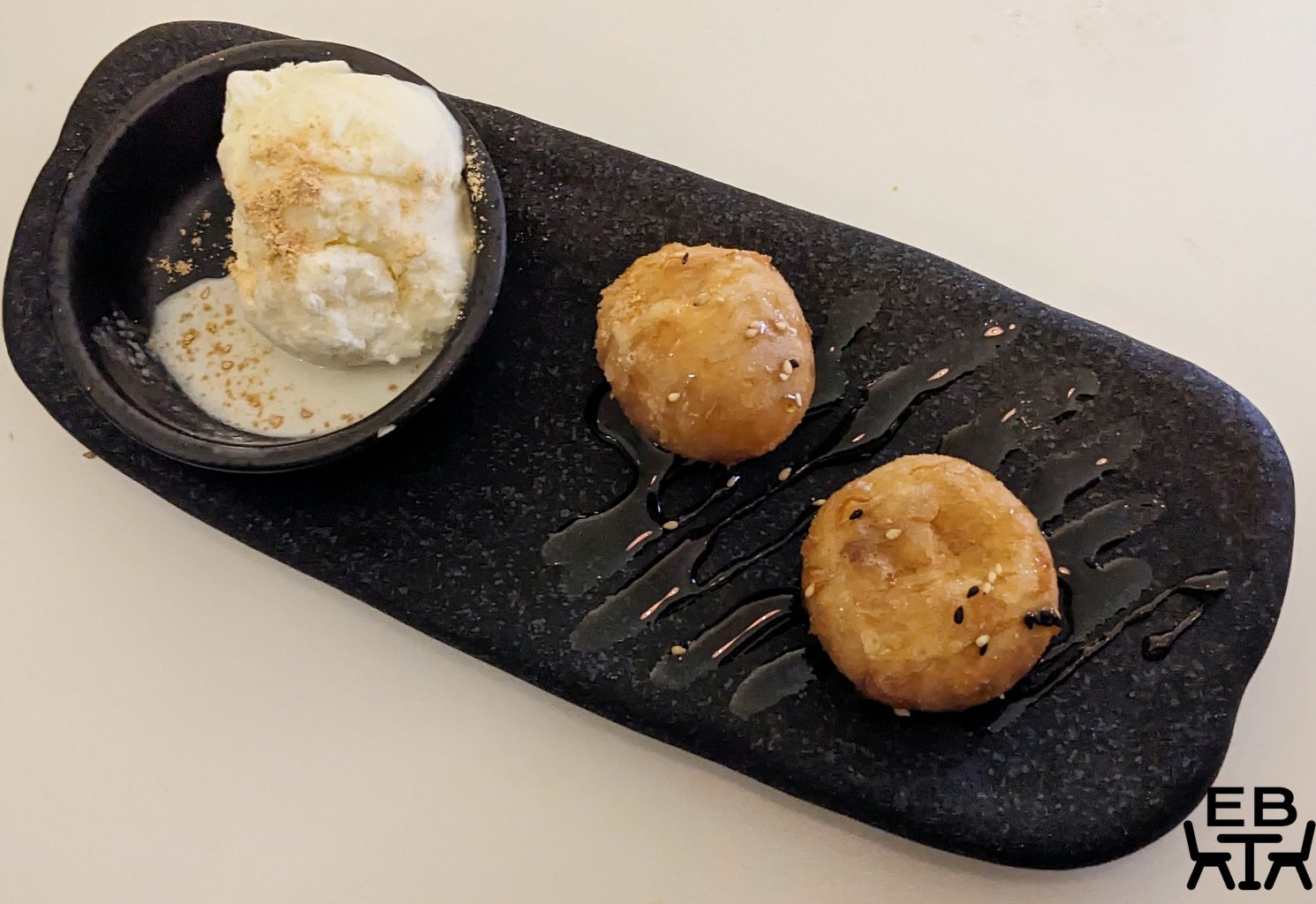
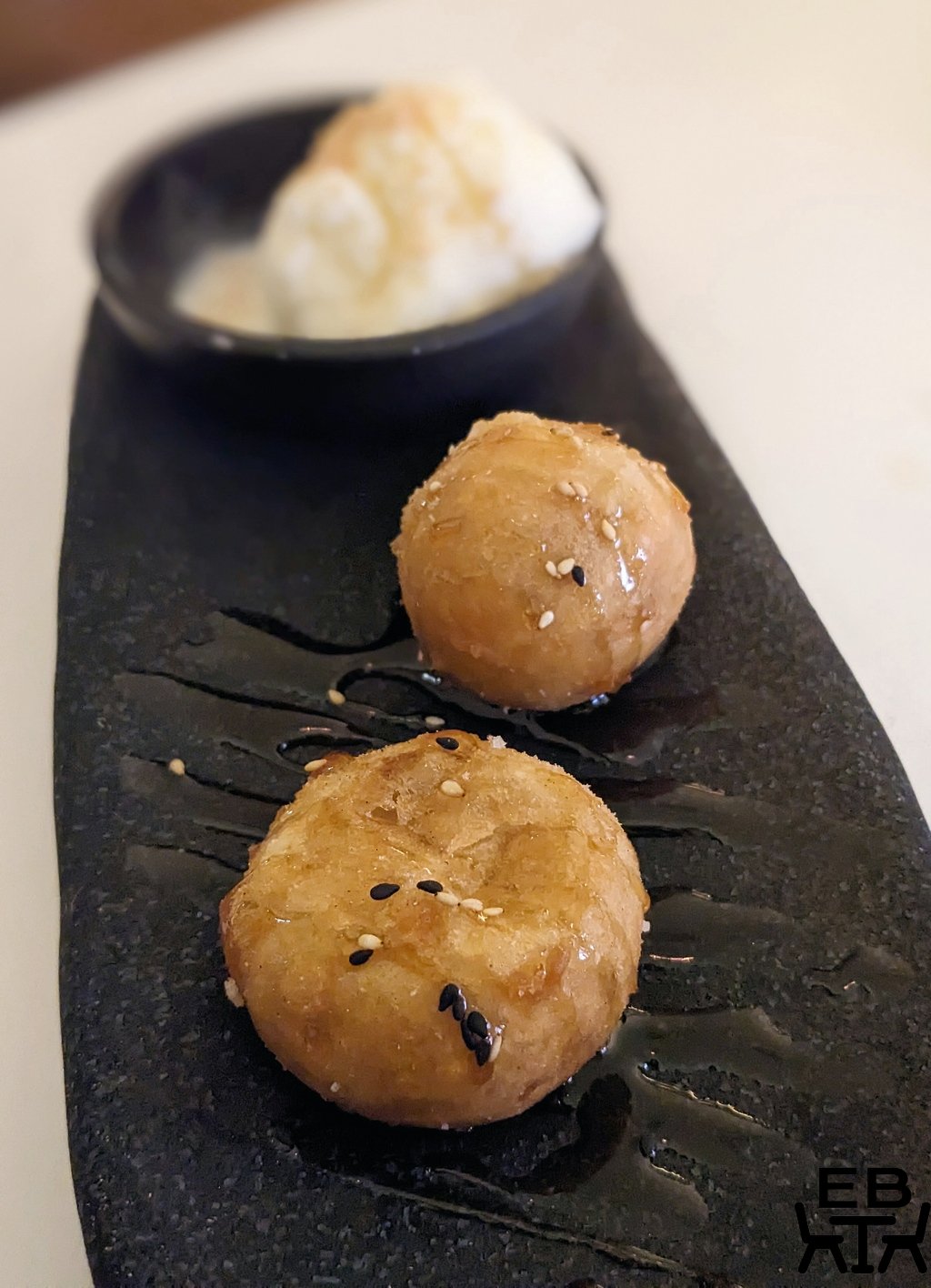
Banoffee, miso caramel crumble, hojicha ice cream. The ice cream with this was indeed a hojicha ice cream, and it had good strength of flavour, with lovely floral notes. The miso caramel was swirled on the plate as both decoration and flavouring, a definite sweet and salty presence. The banoffee pie piece had the expected mix of cream and banana, with a salty chocolate biscuit base under it.
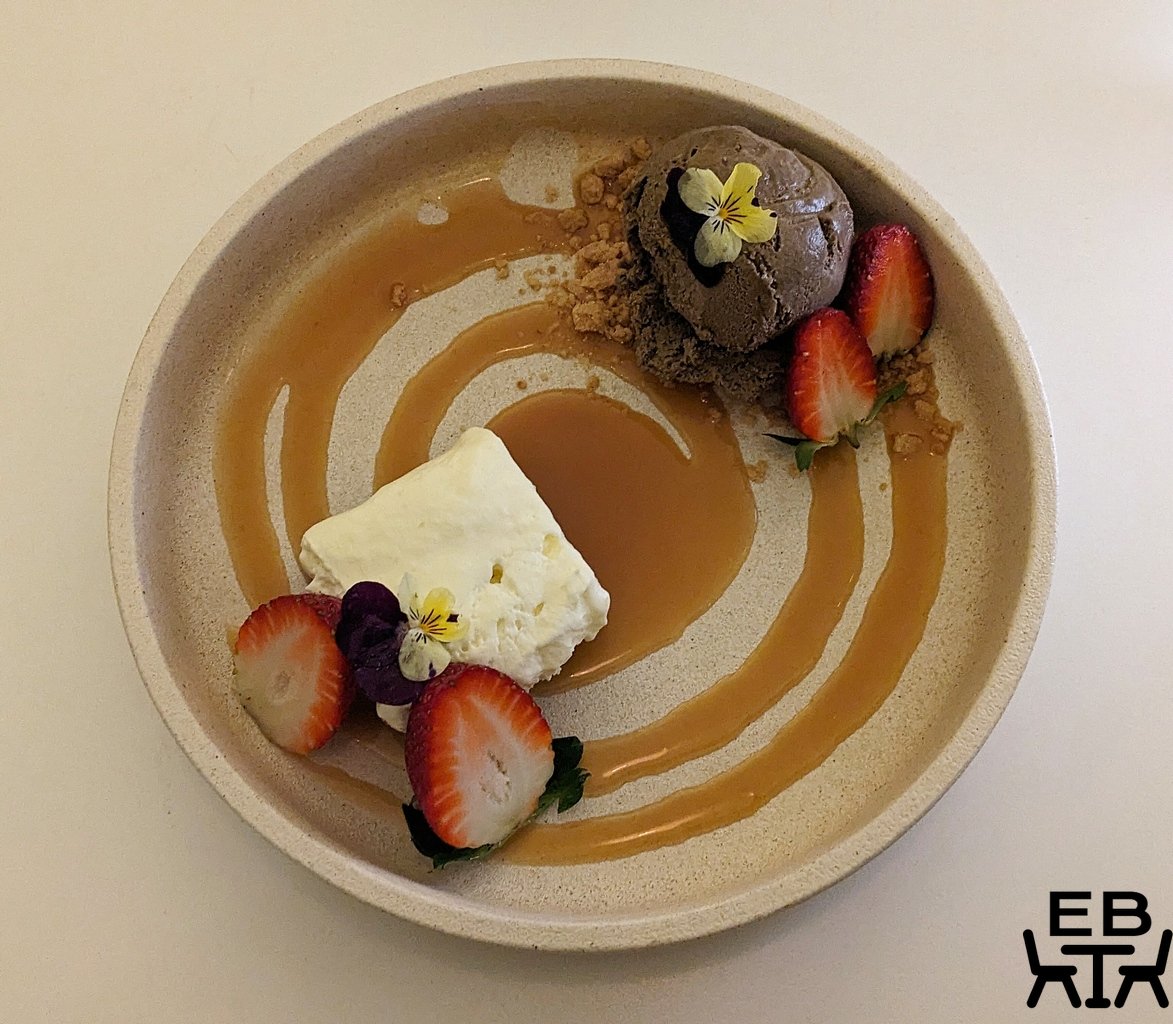
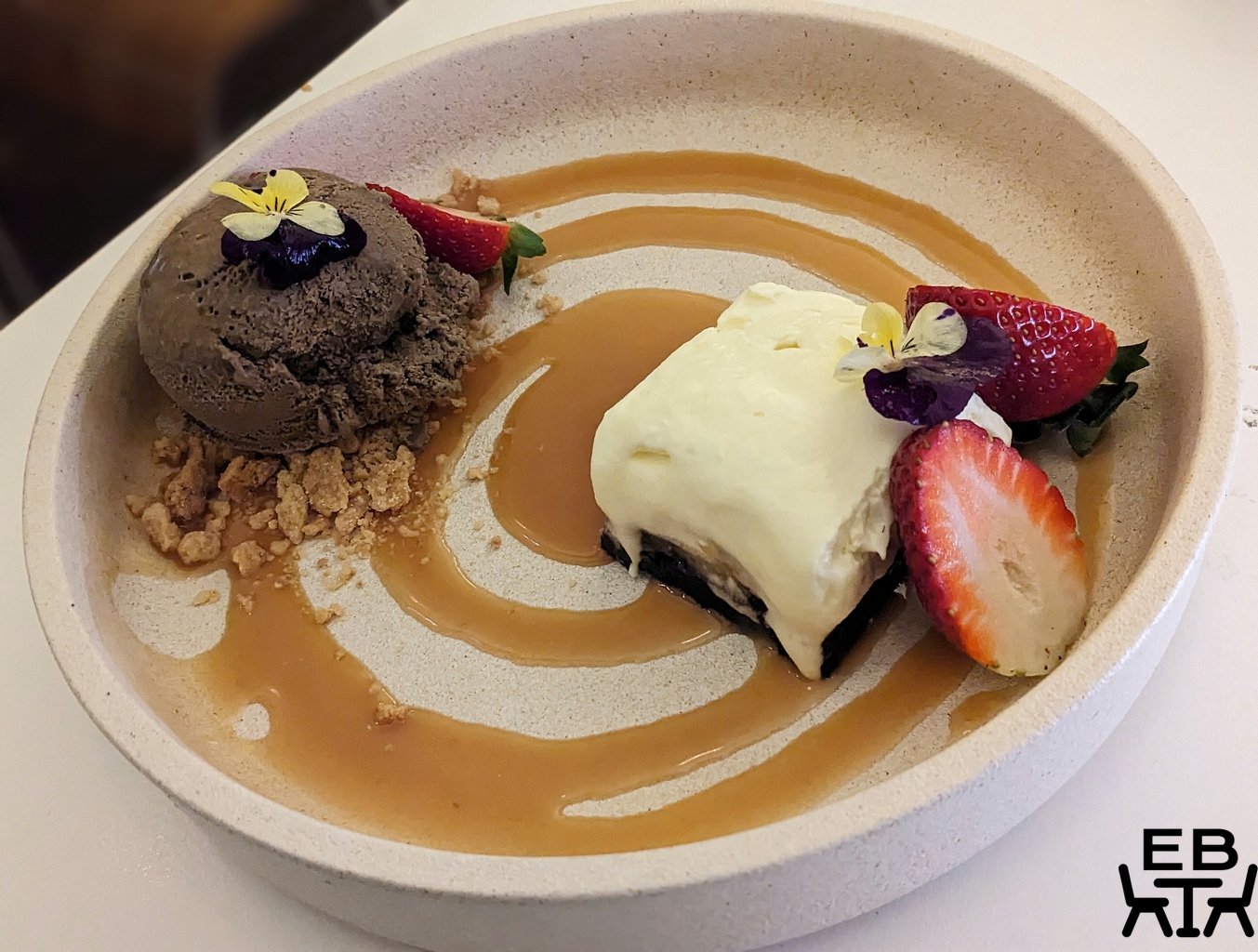
Dessert was the weakest area, but on the whole, we enjoyed our meal at Haiku Kuro. The dishes were tasty, and the elements well prepared. Staff were helpful, cheerful, and friendly, and were attentive to diners even as it got progressively more packed. If you are a Japanese food traditionalist, this may not be for you, but if you want to try something a bit different, you should add Haiku Kuro to your list. We would recommend booking ahead if aiming to visit on a weekend evening.
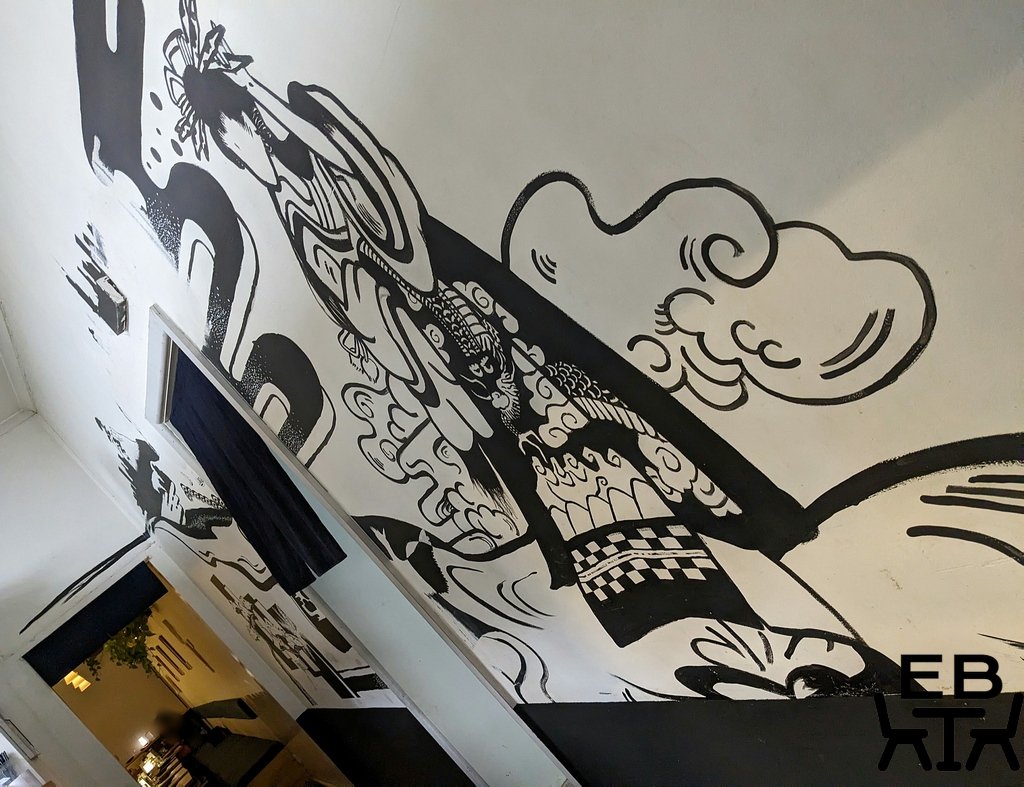
Scores:
Food: 3/4
Setting: 1.5/2
Service: 2/2
Total: 6.5/8
Price point: The small plates or starters we had $14 to $18 each. Our rice and noodle dishes $25 to $26. Desserts $11 to $12.
Value: Alright, though less so for dessert.
Details:
Address: 1161 Toorak Rd, Camberwell
Phone: 03 9995 3815
Website: Haiku Kuro
